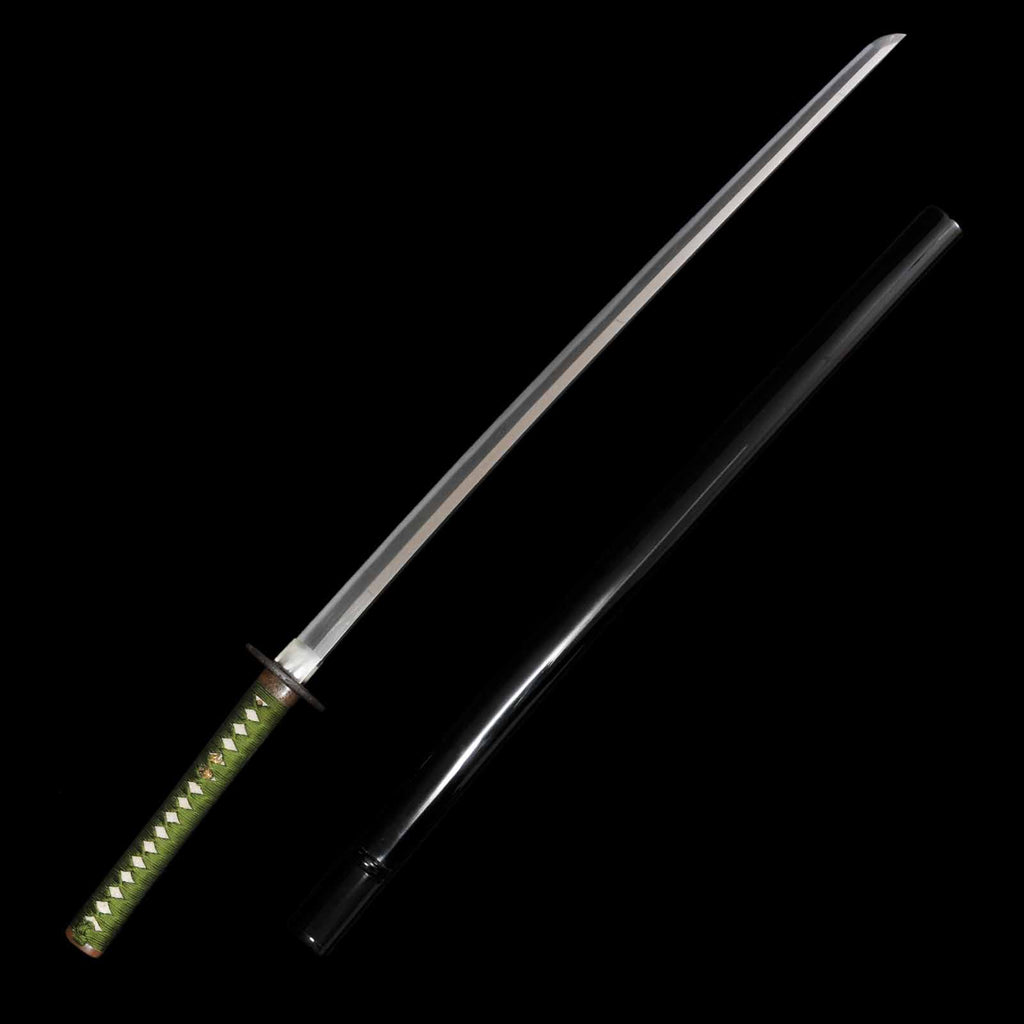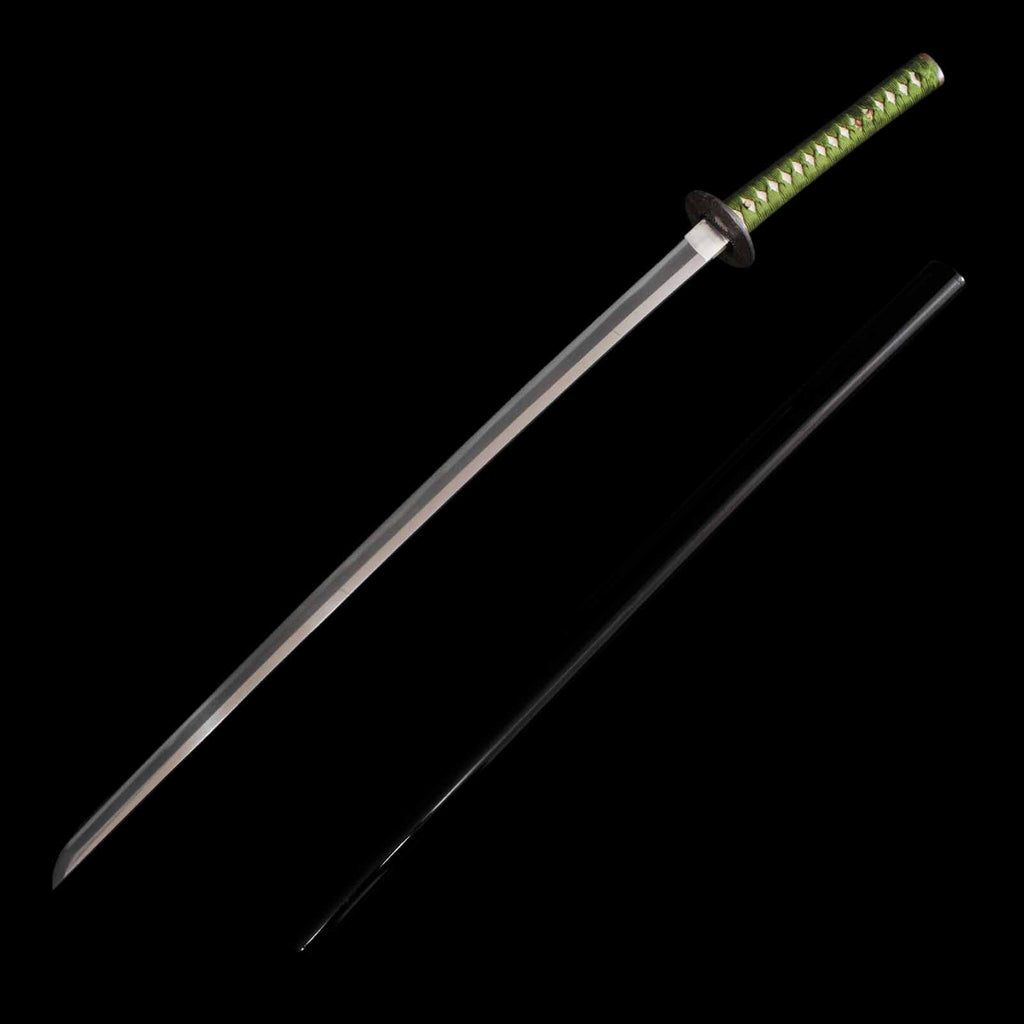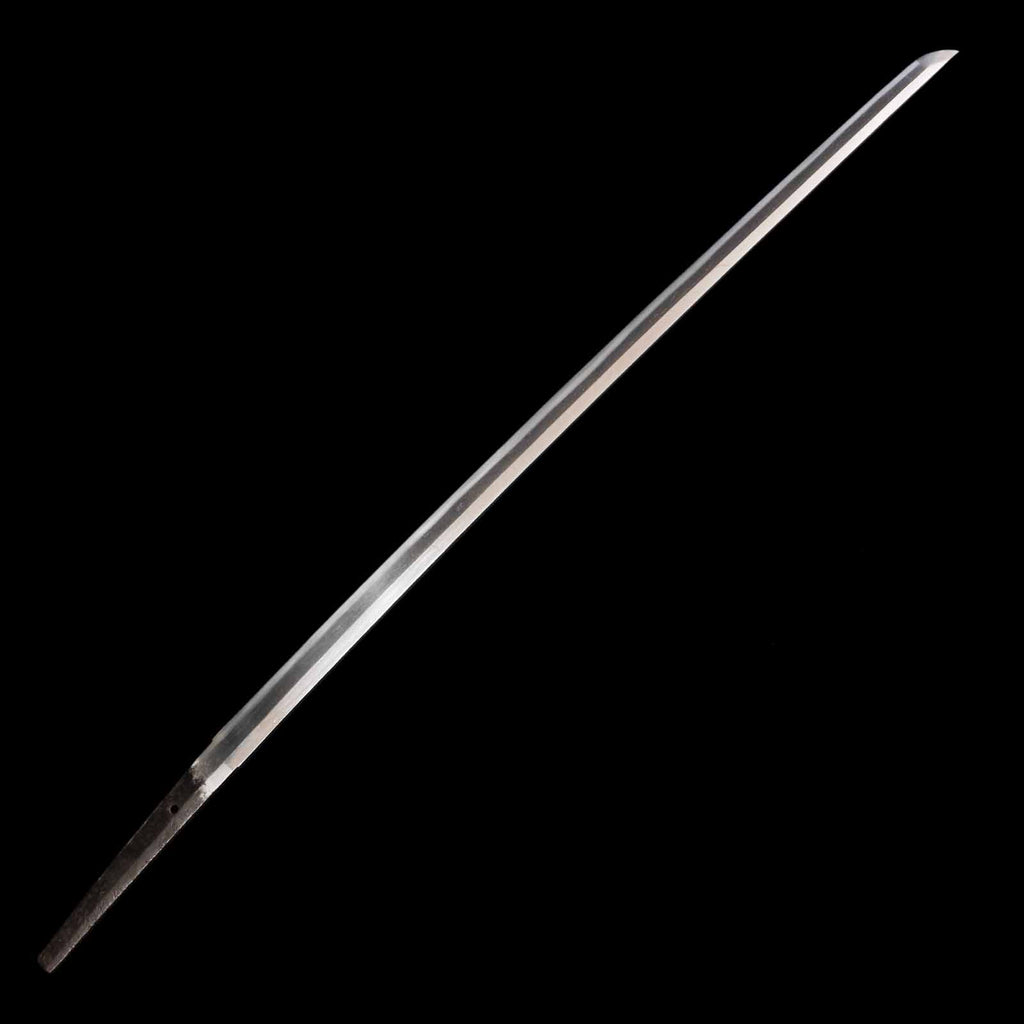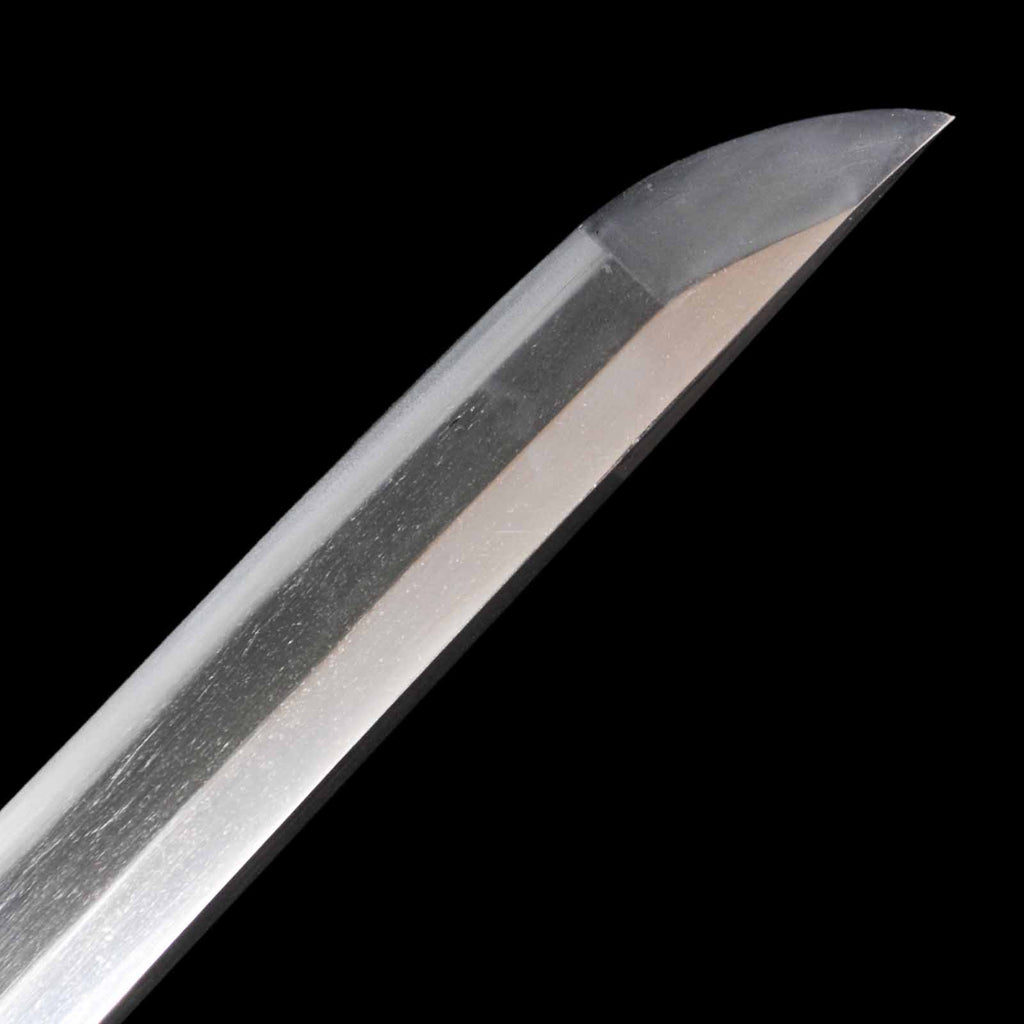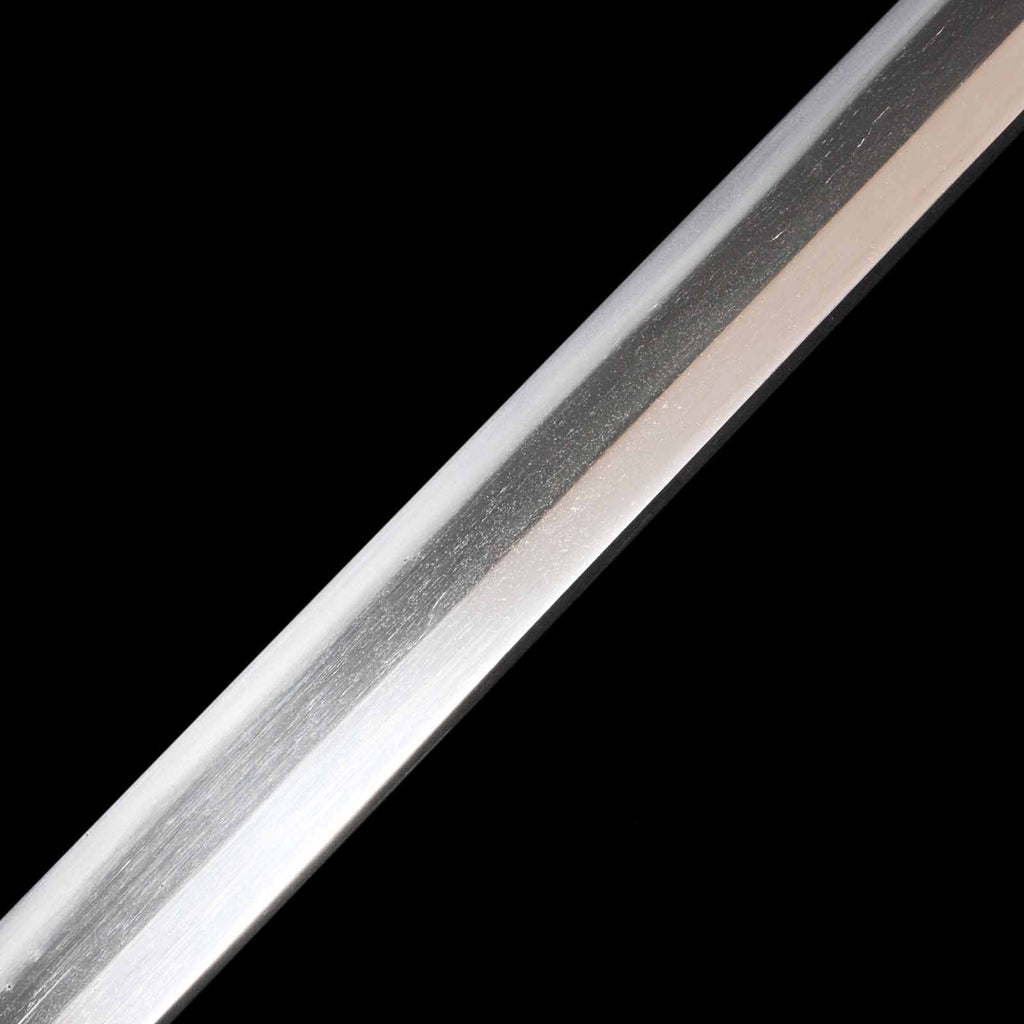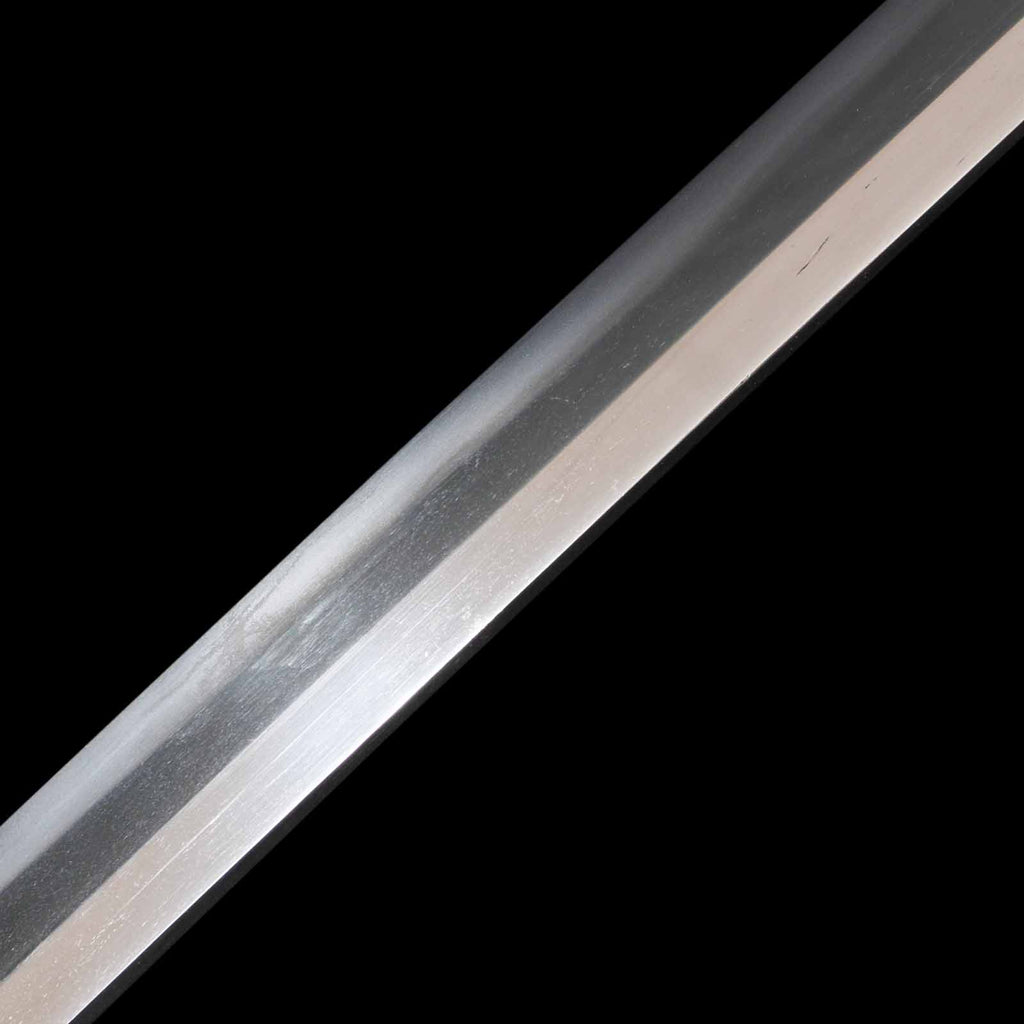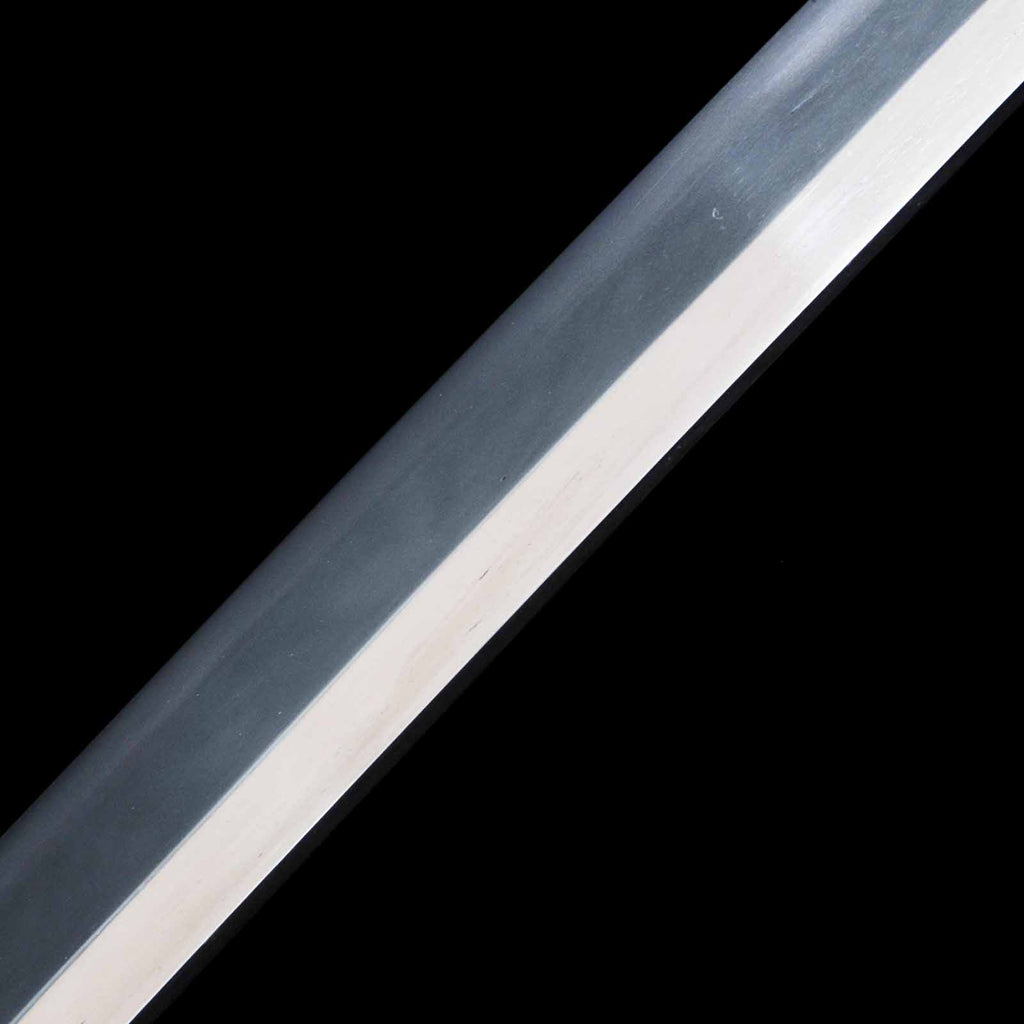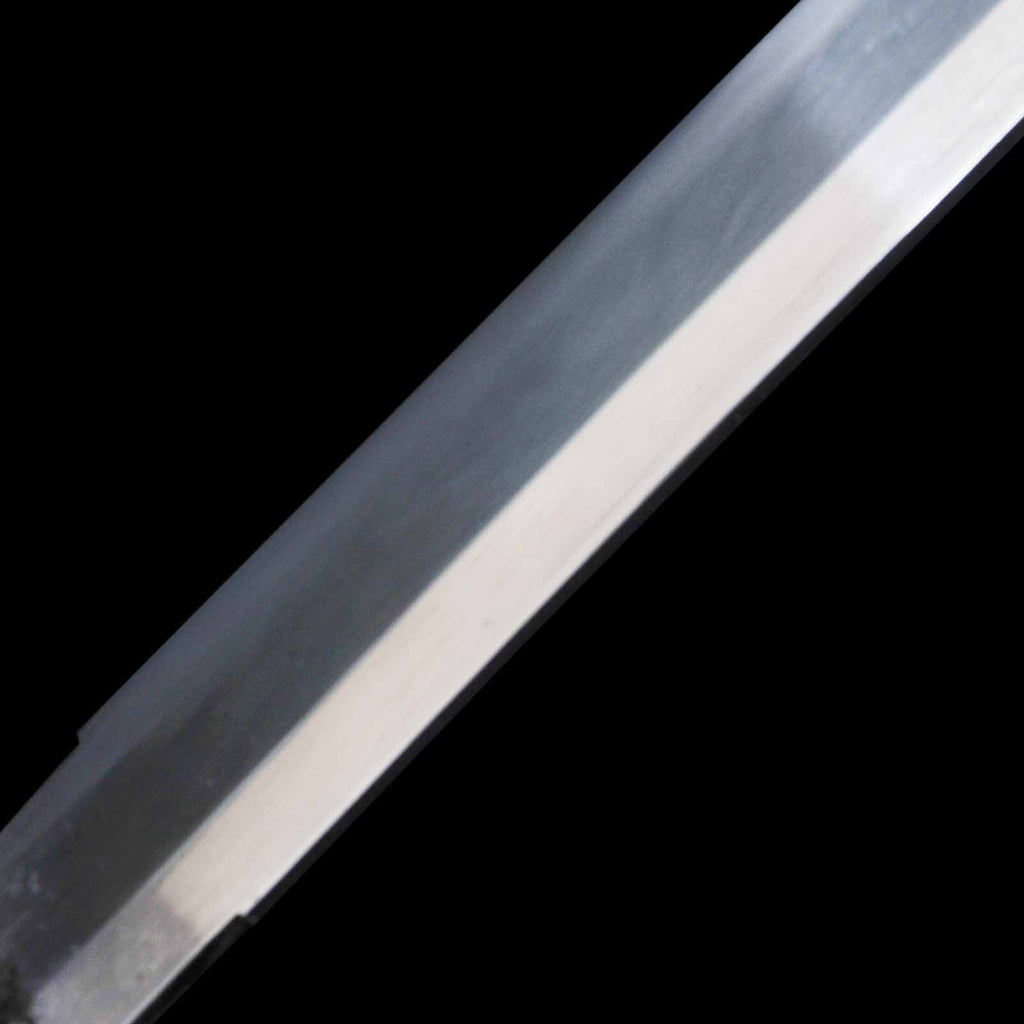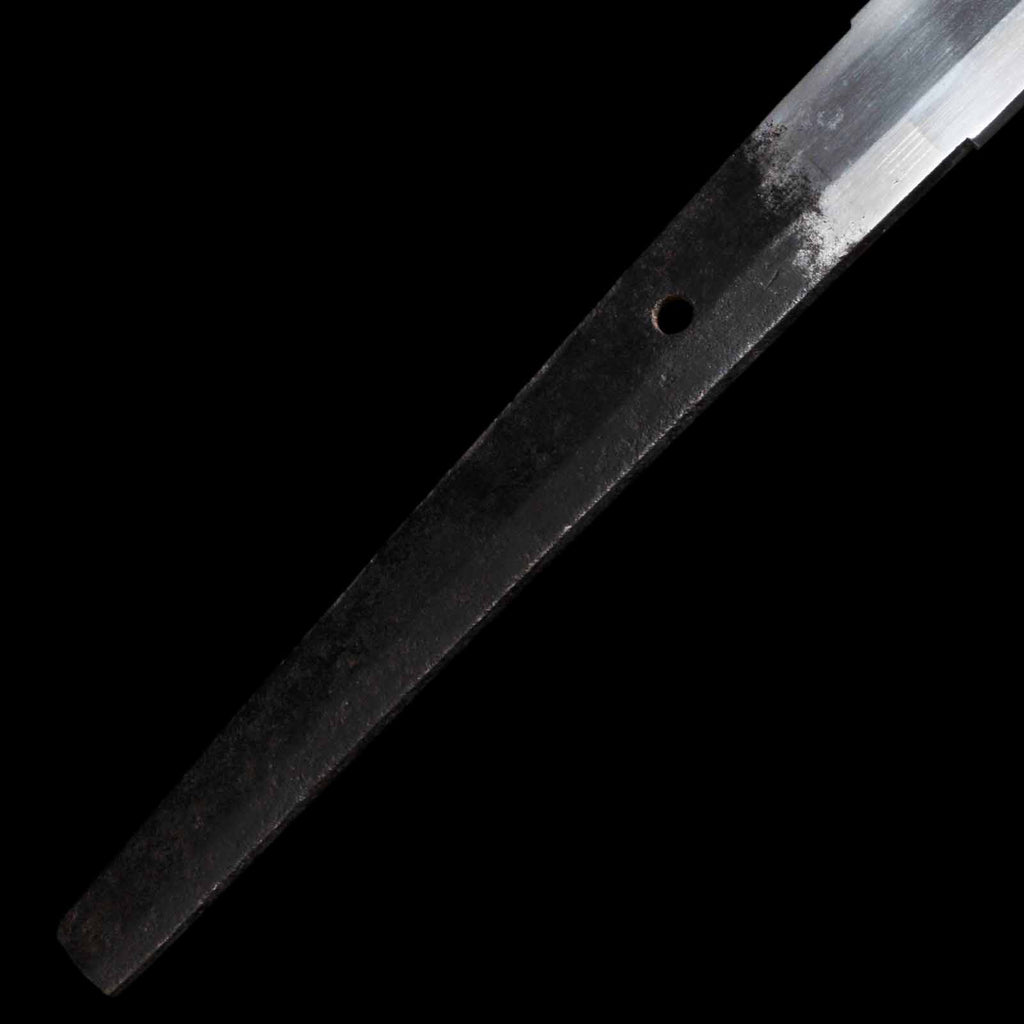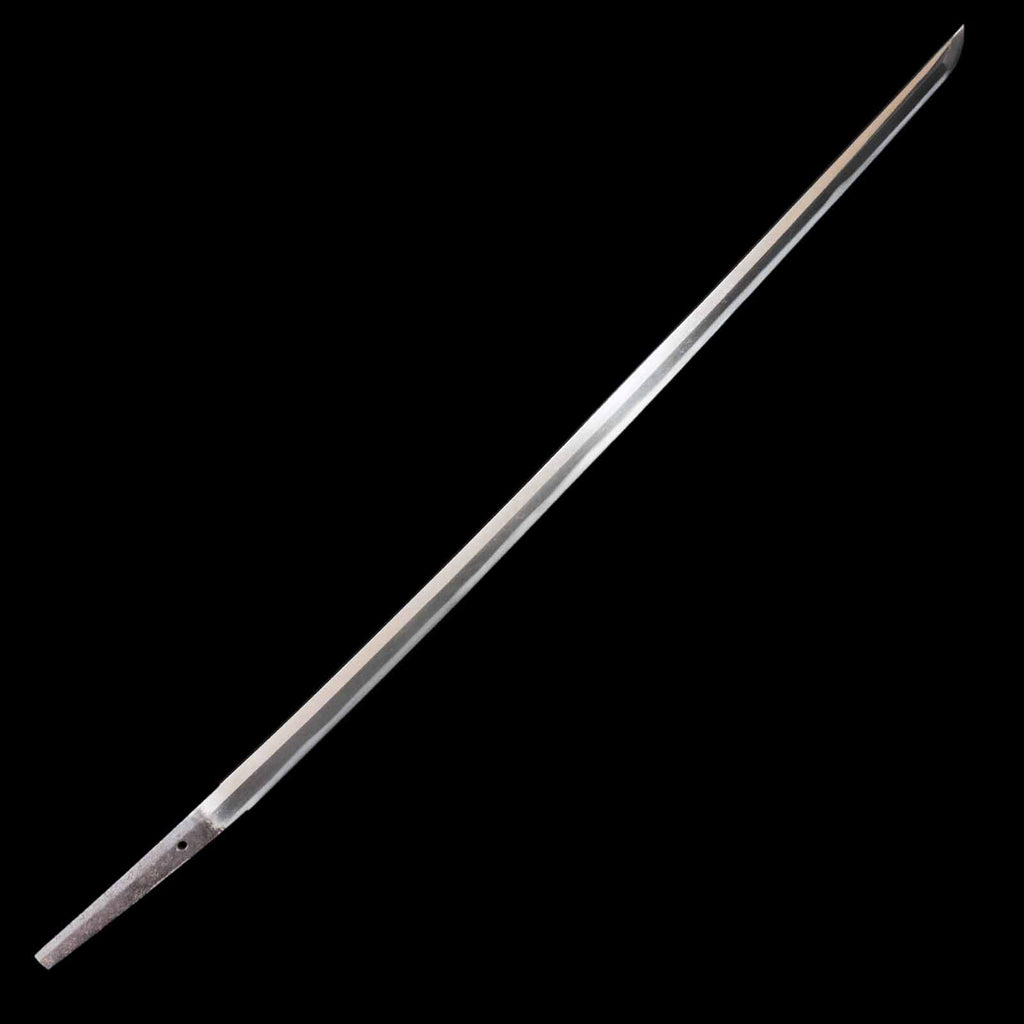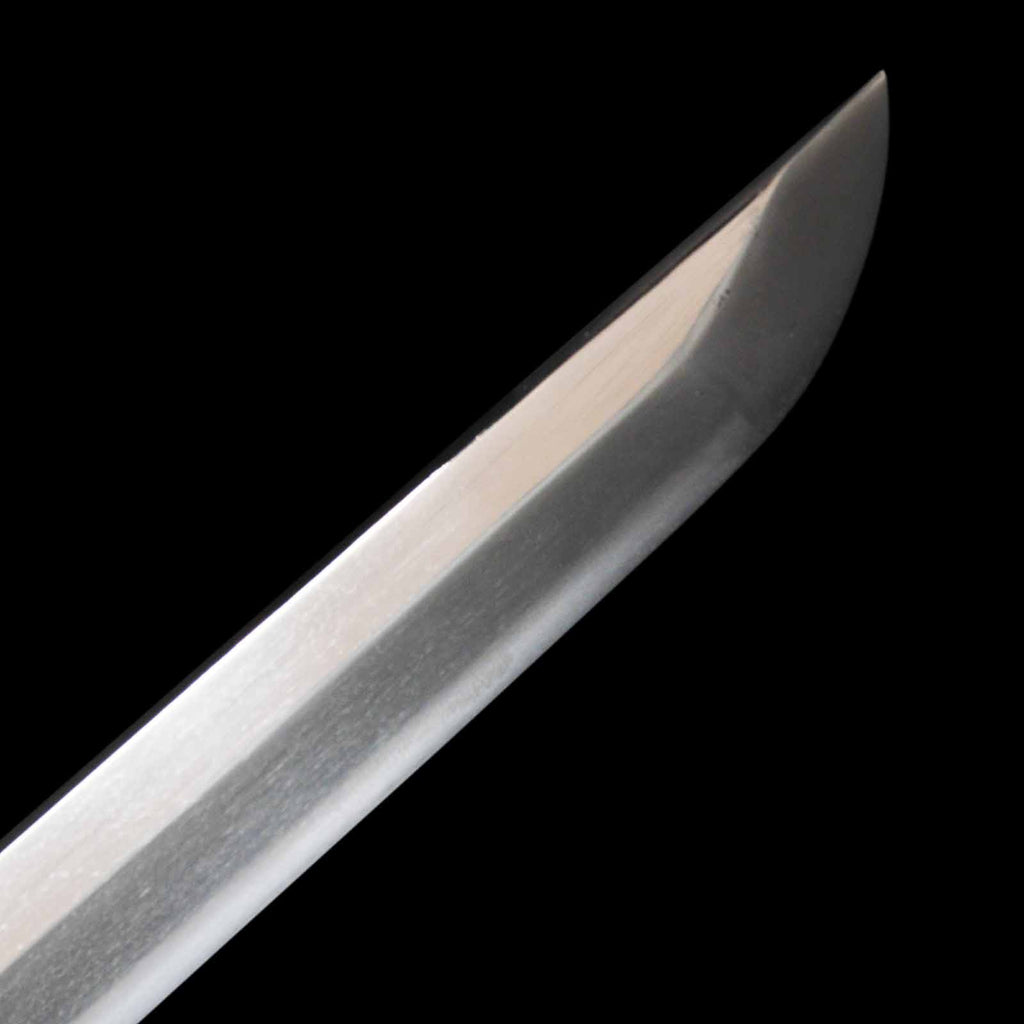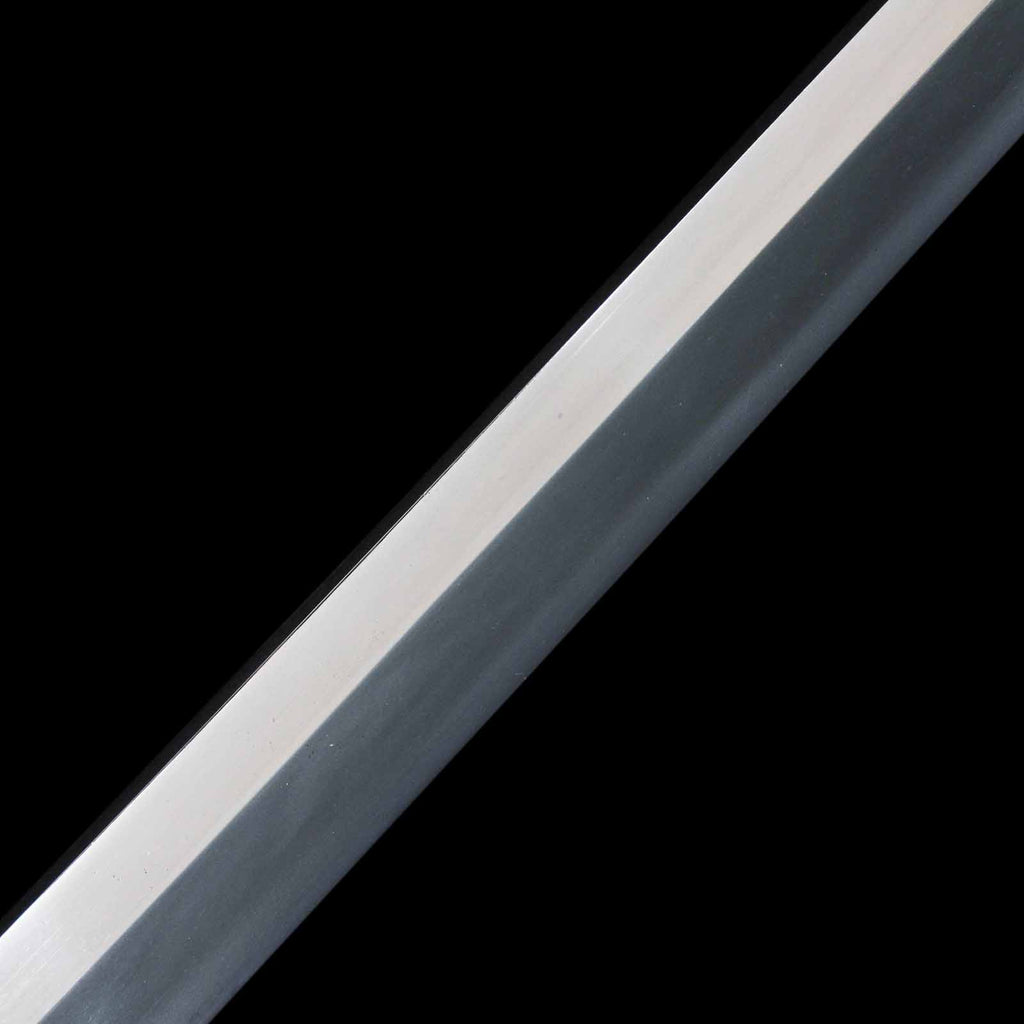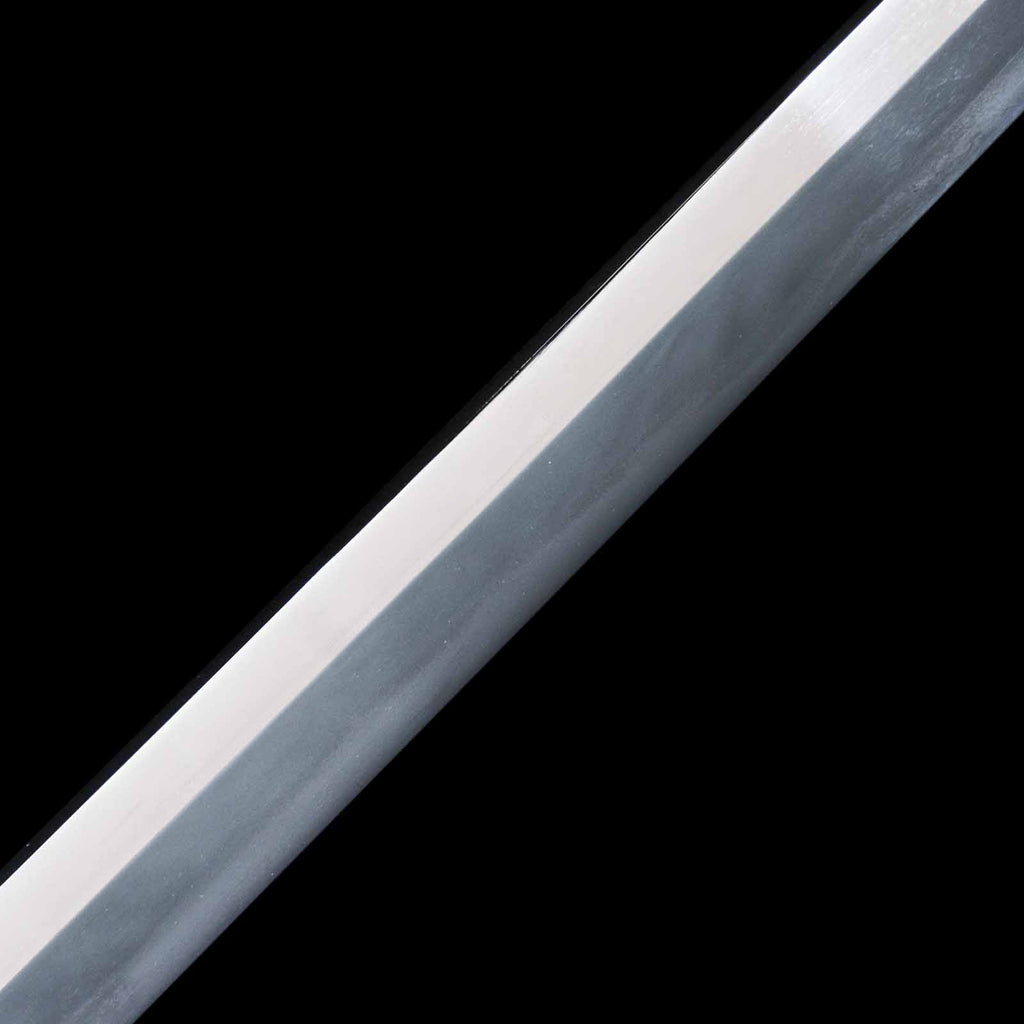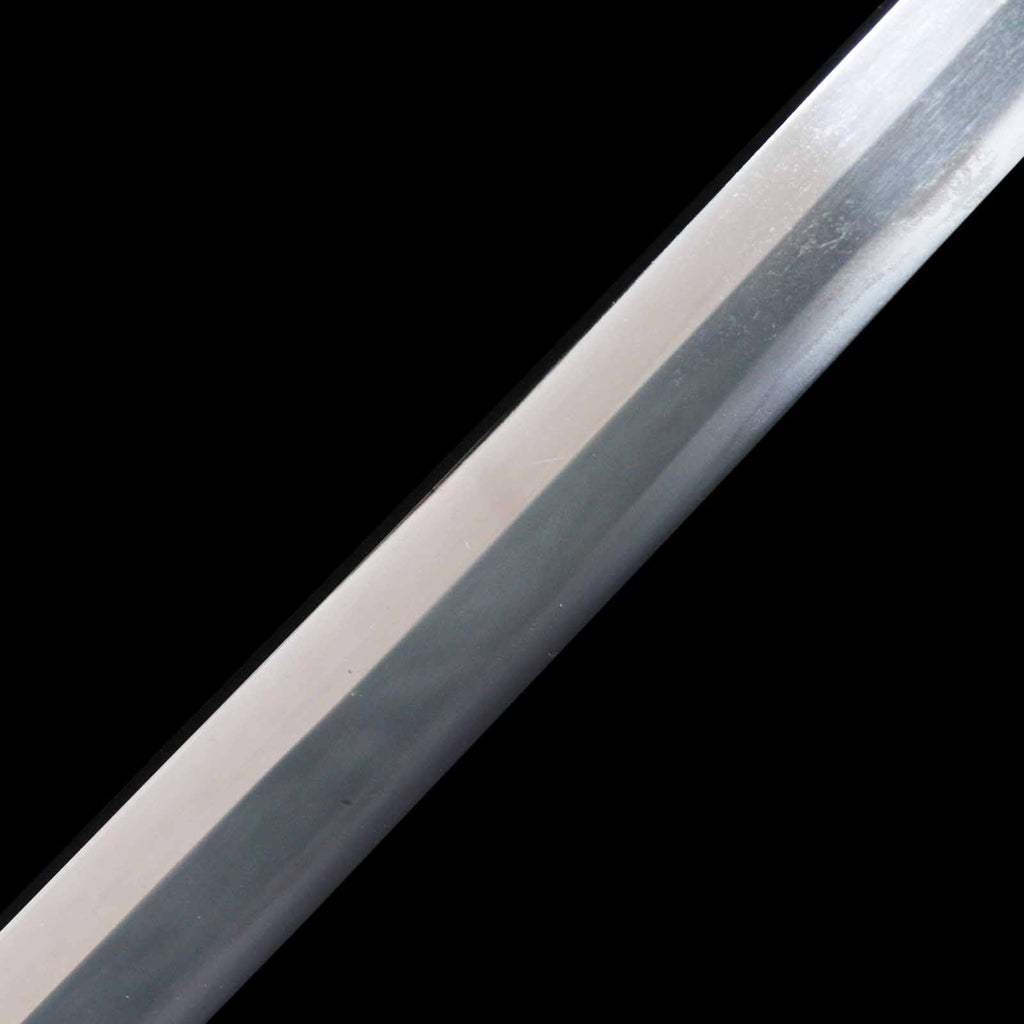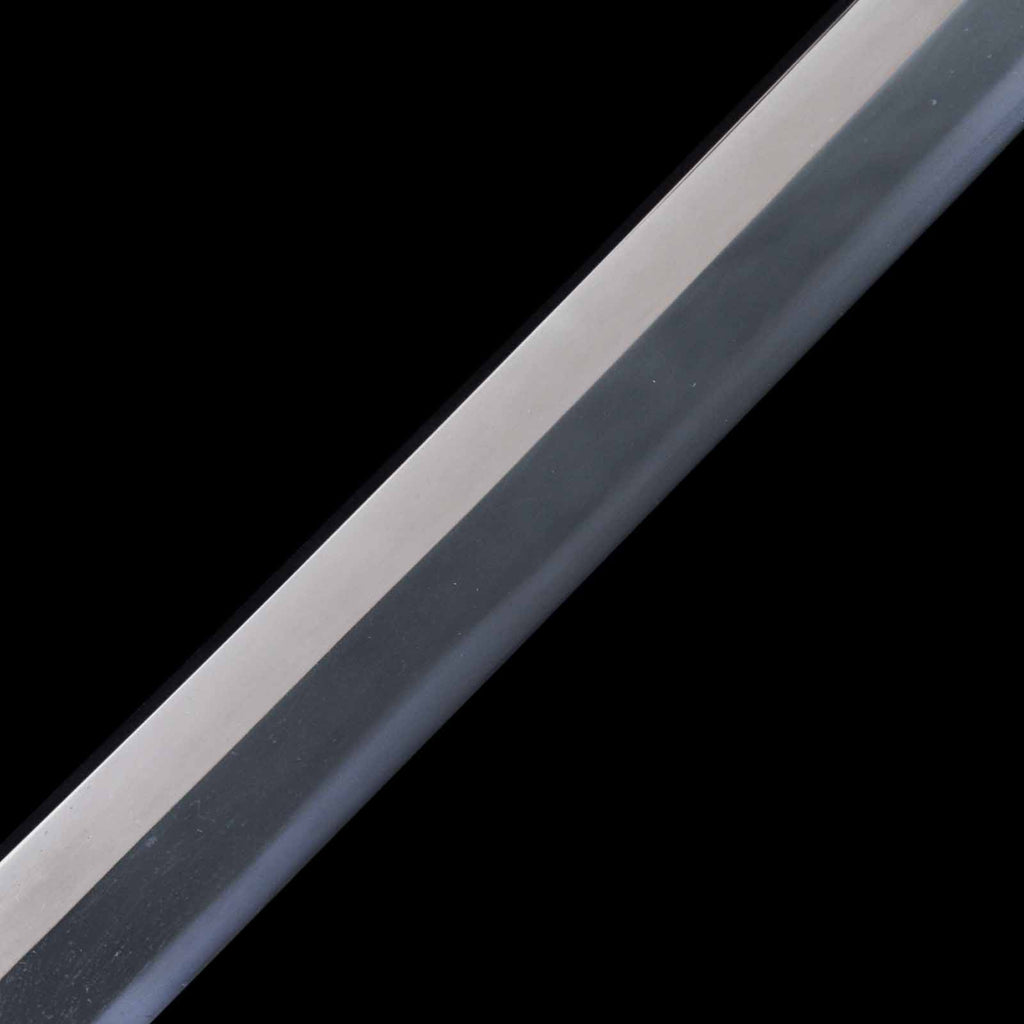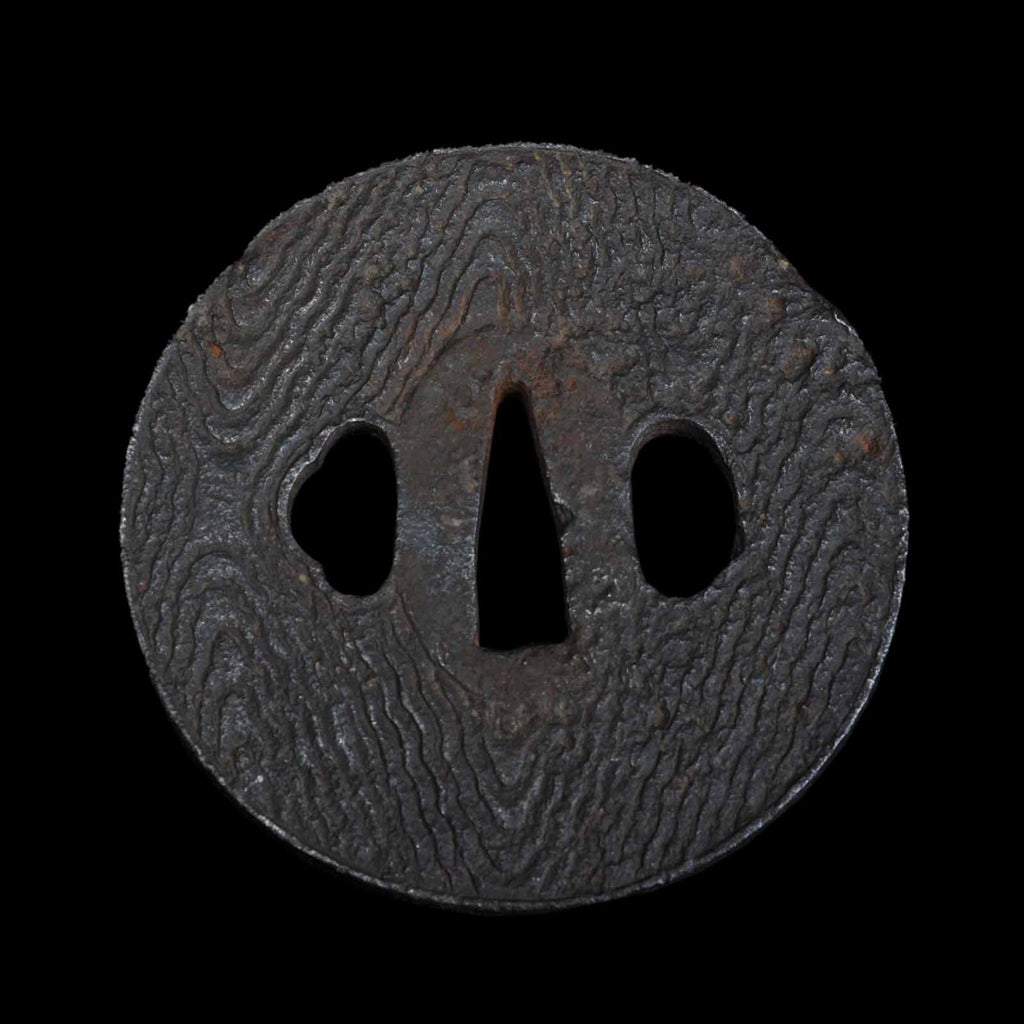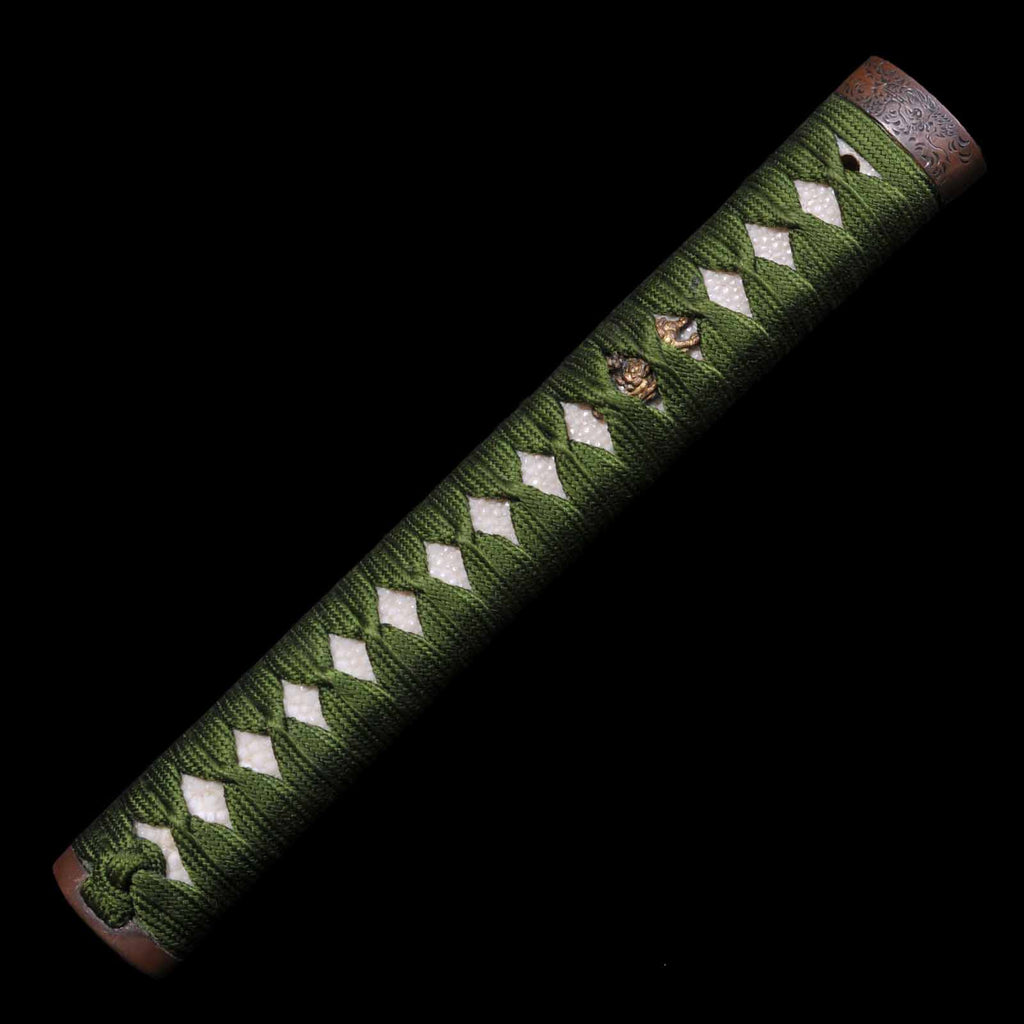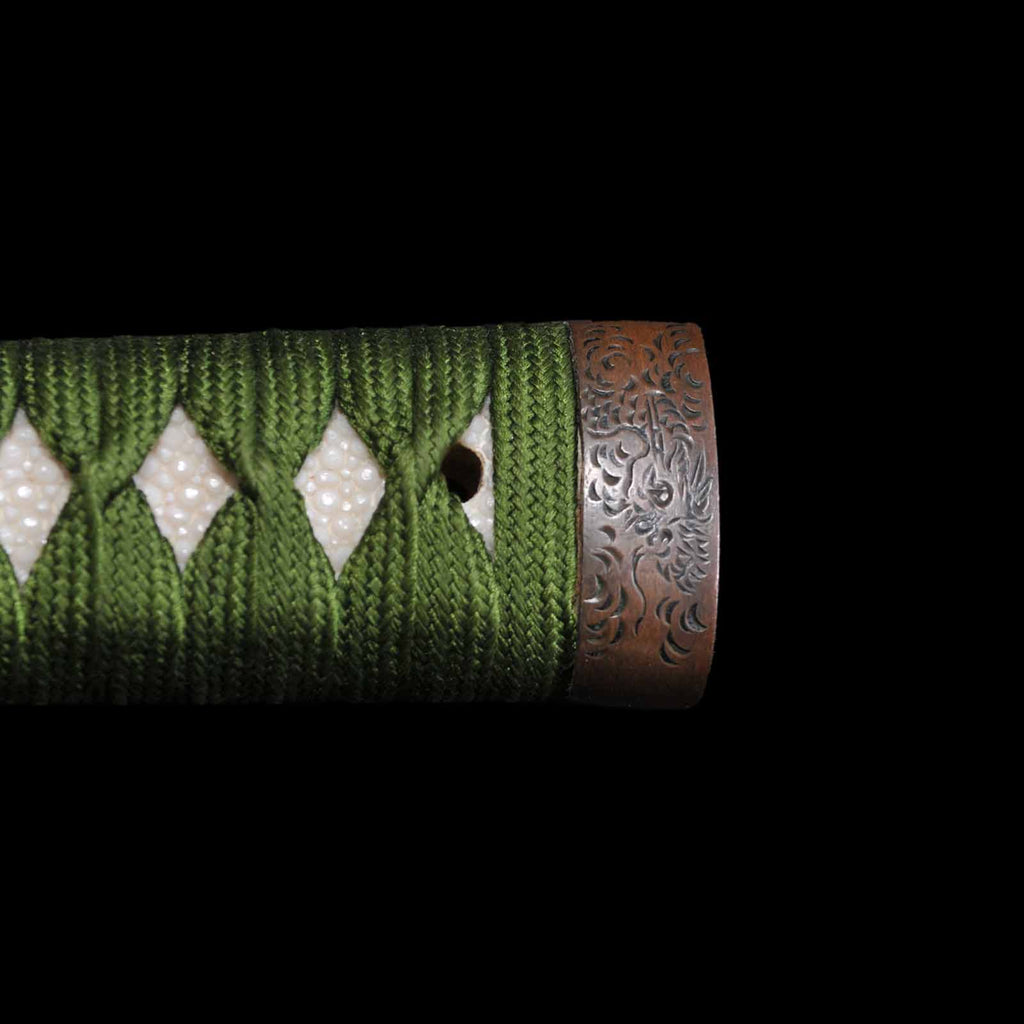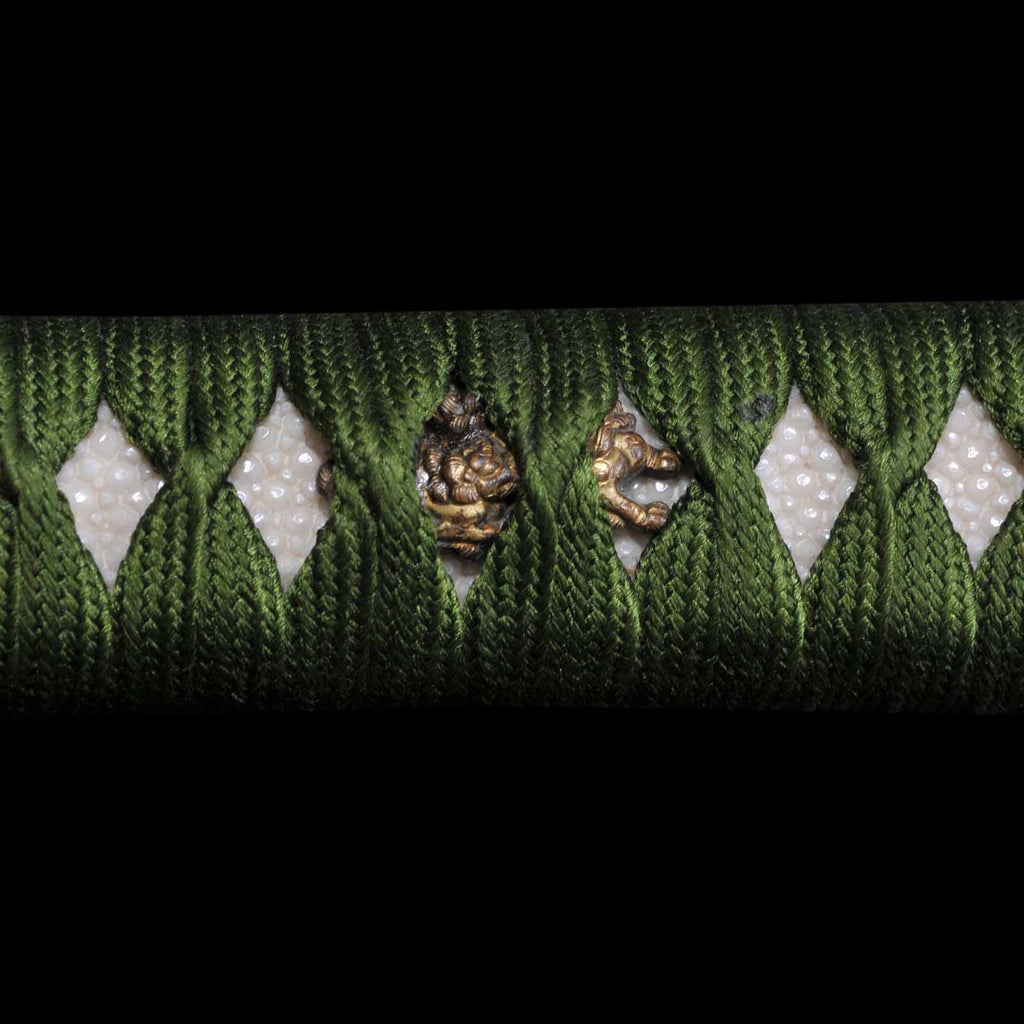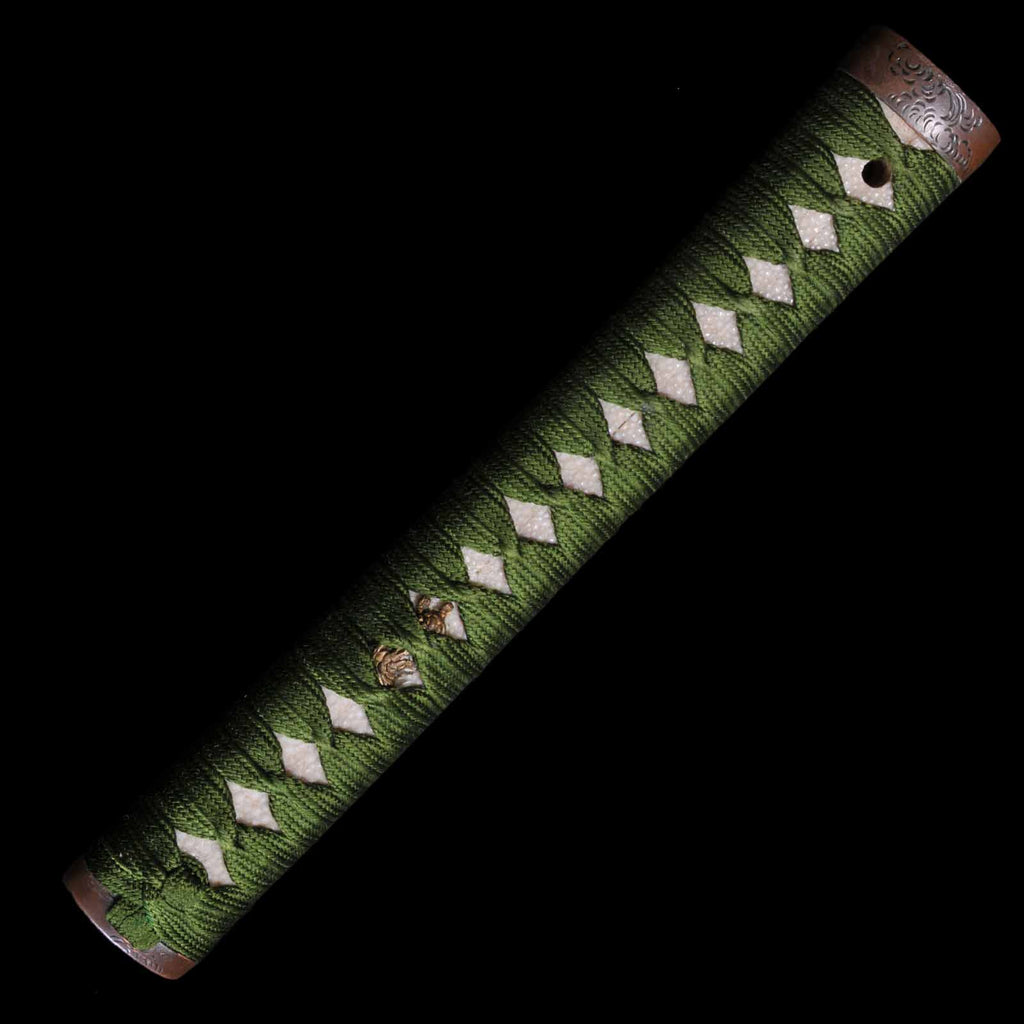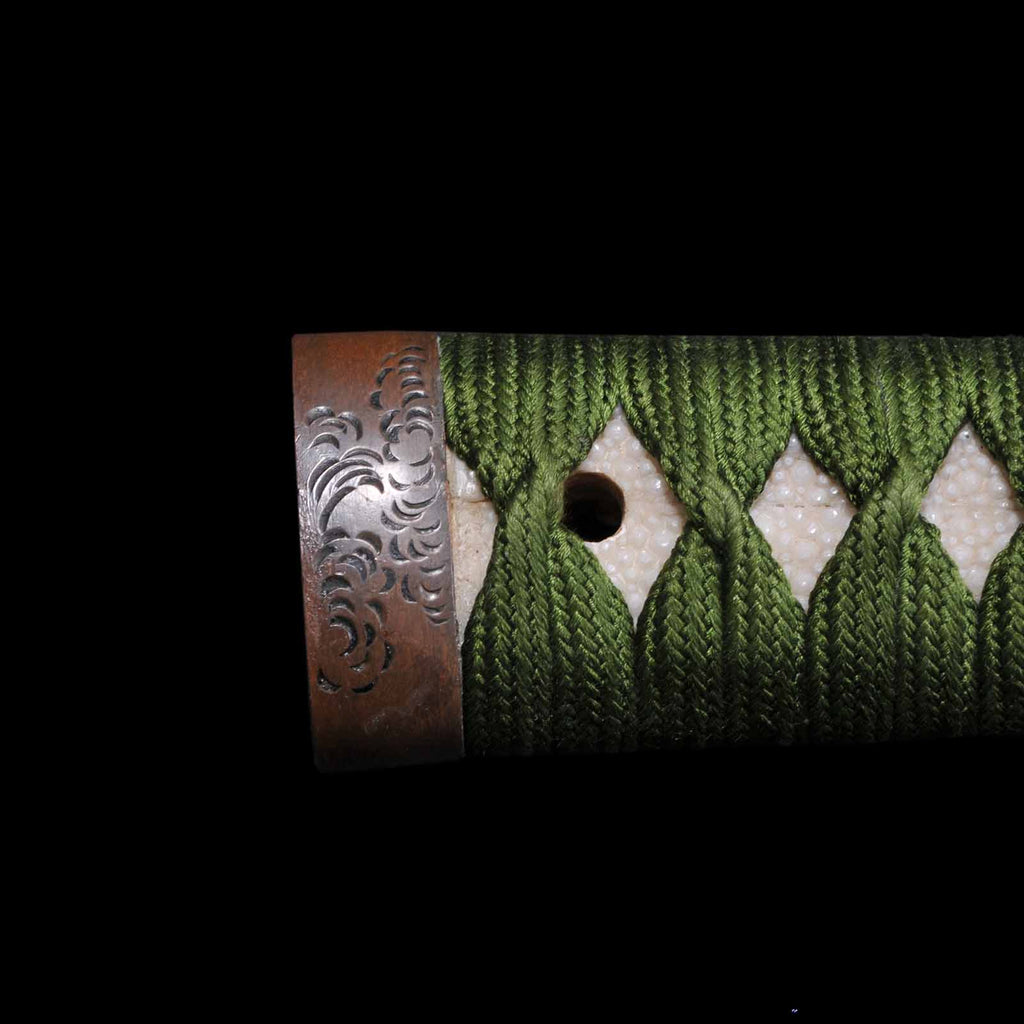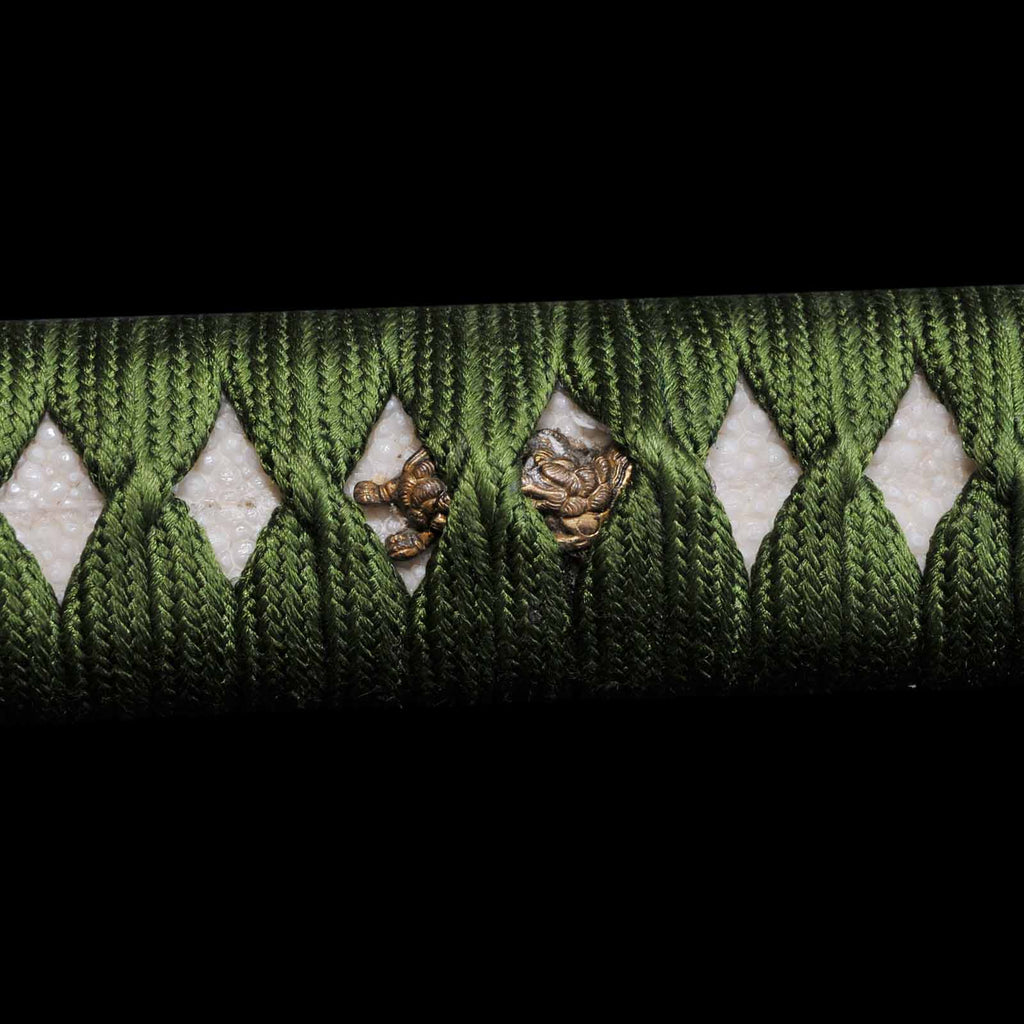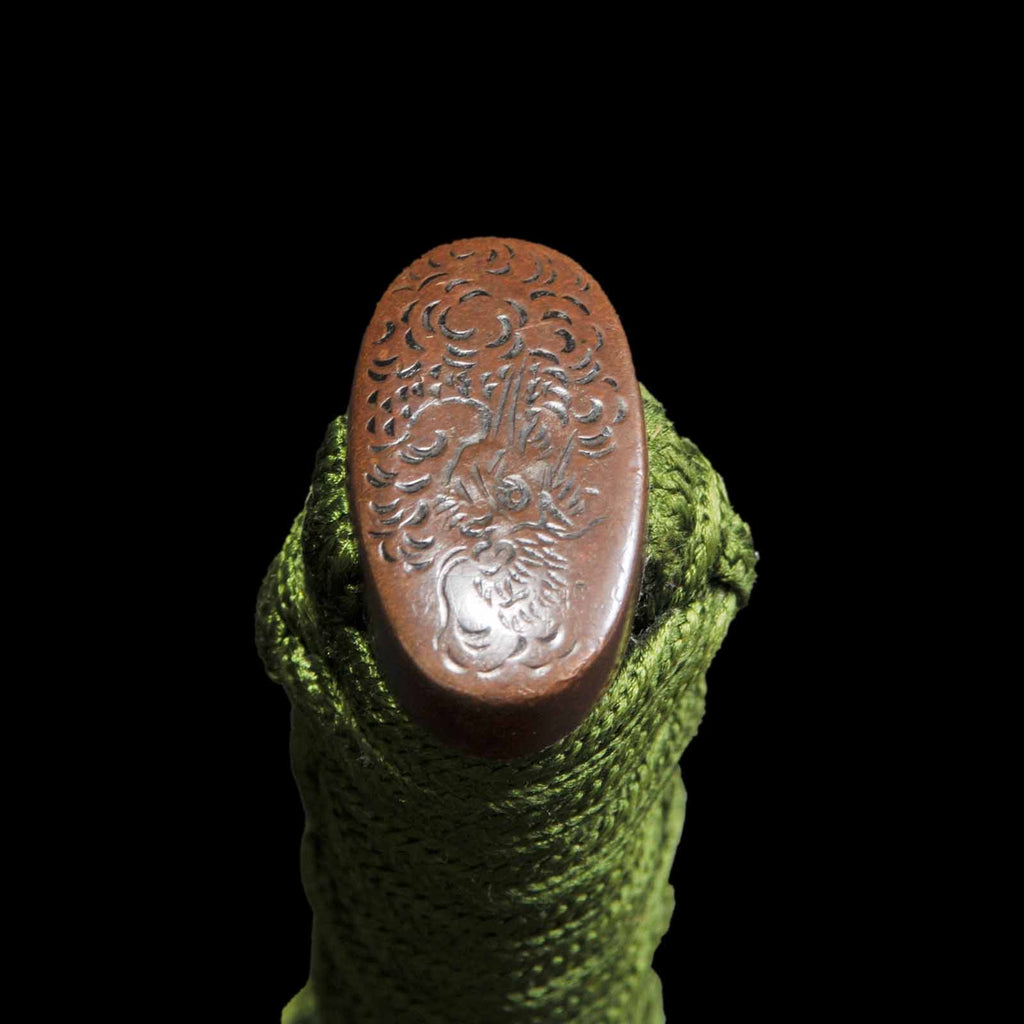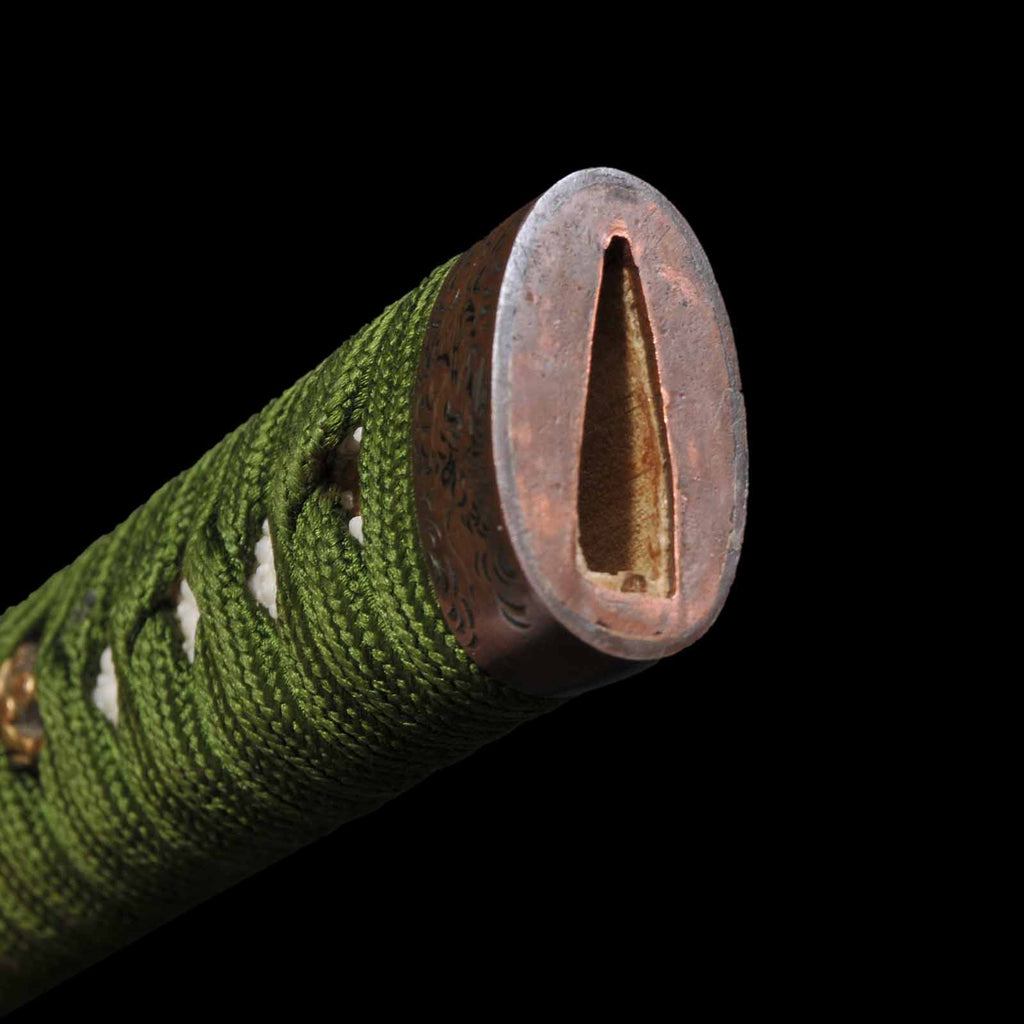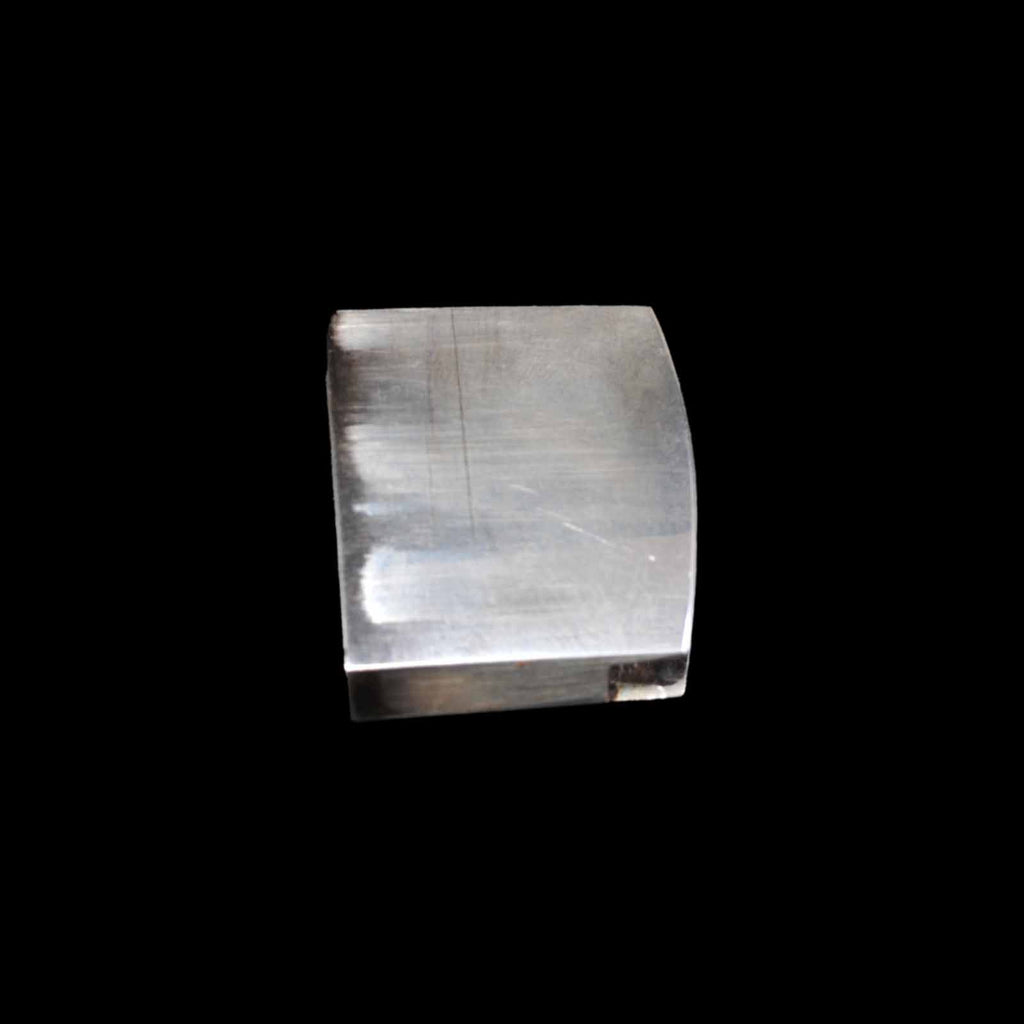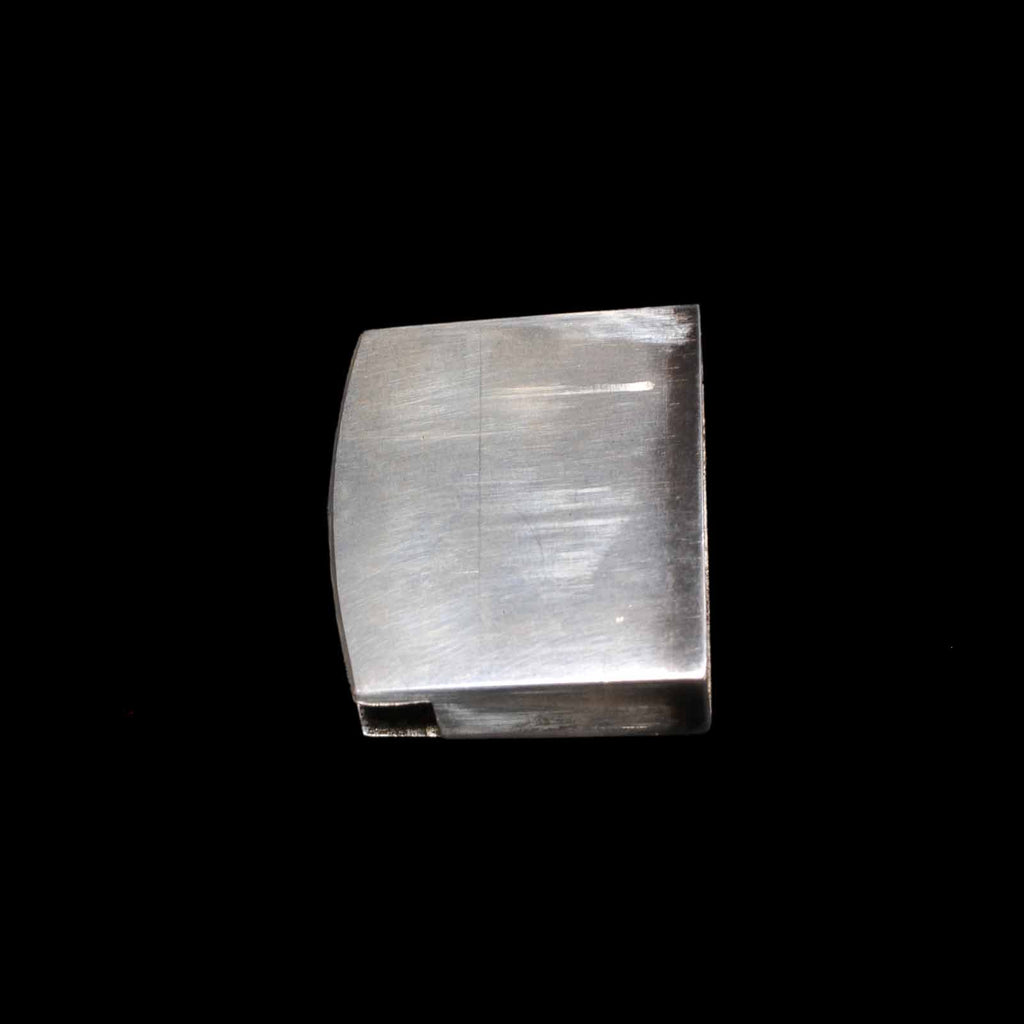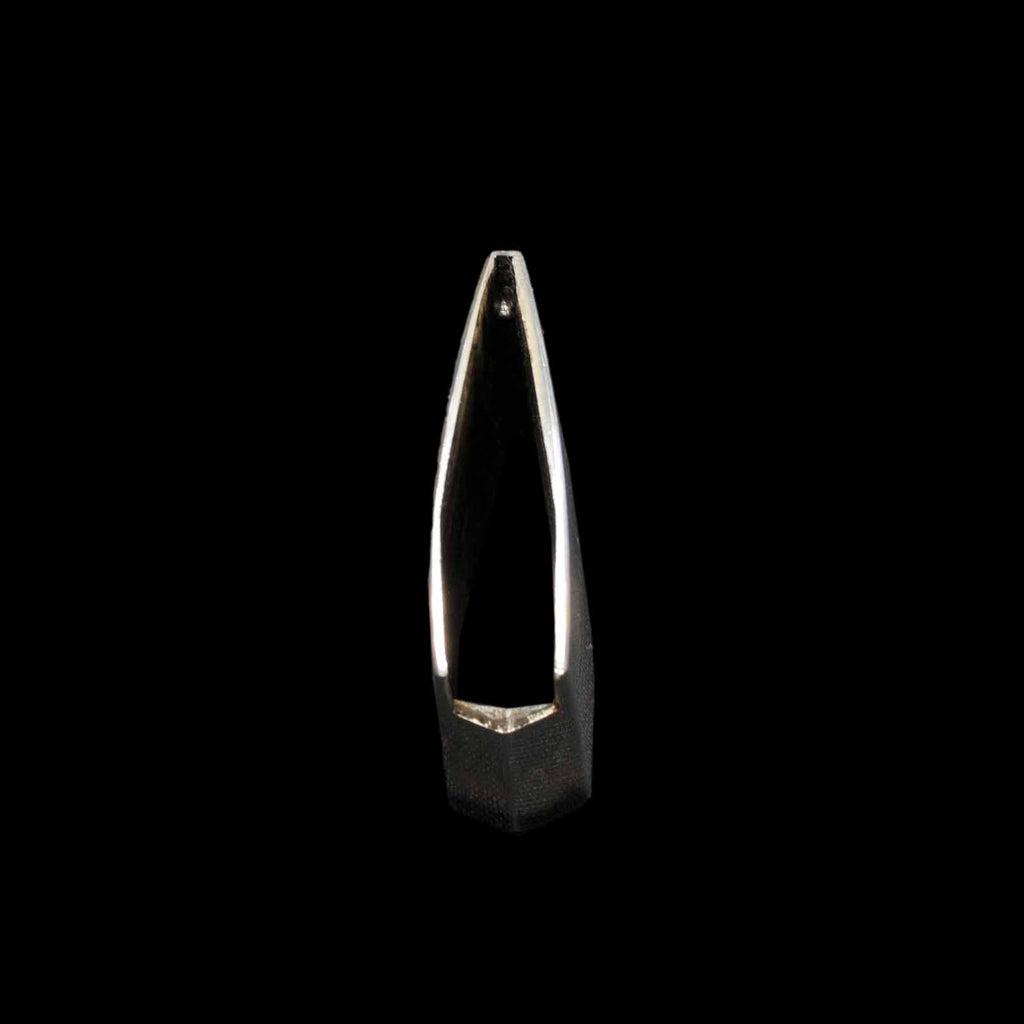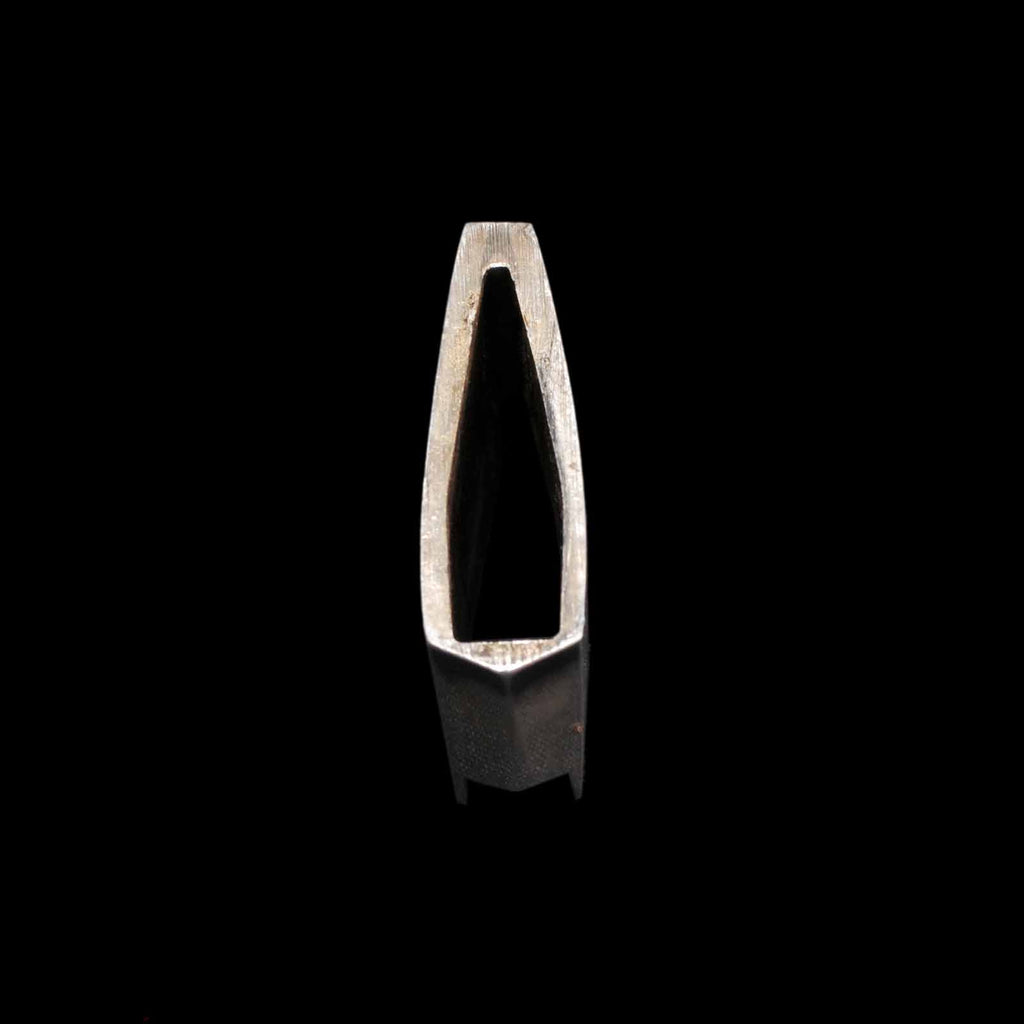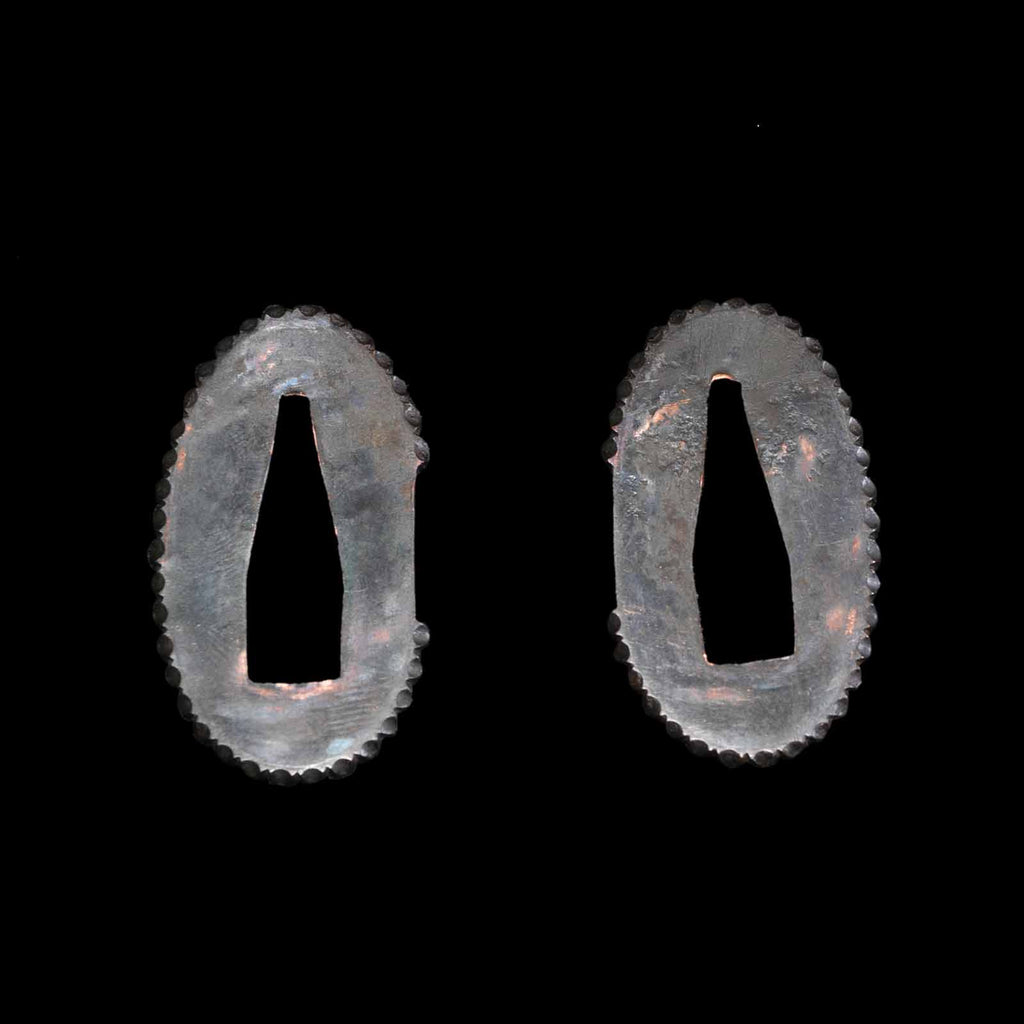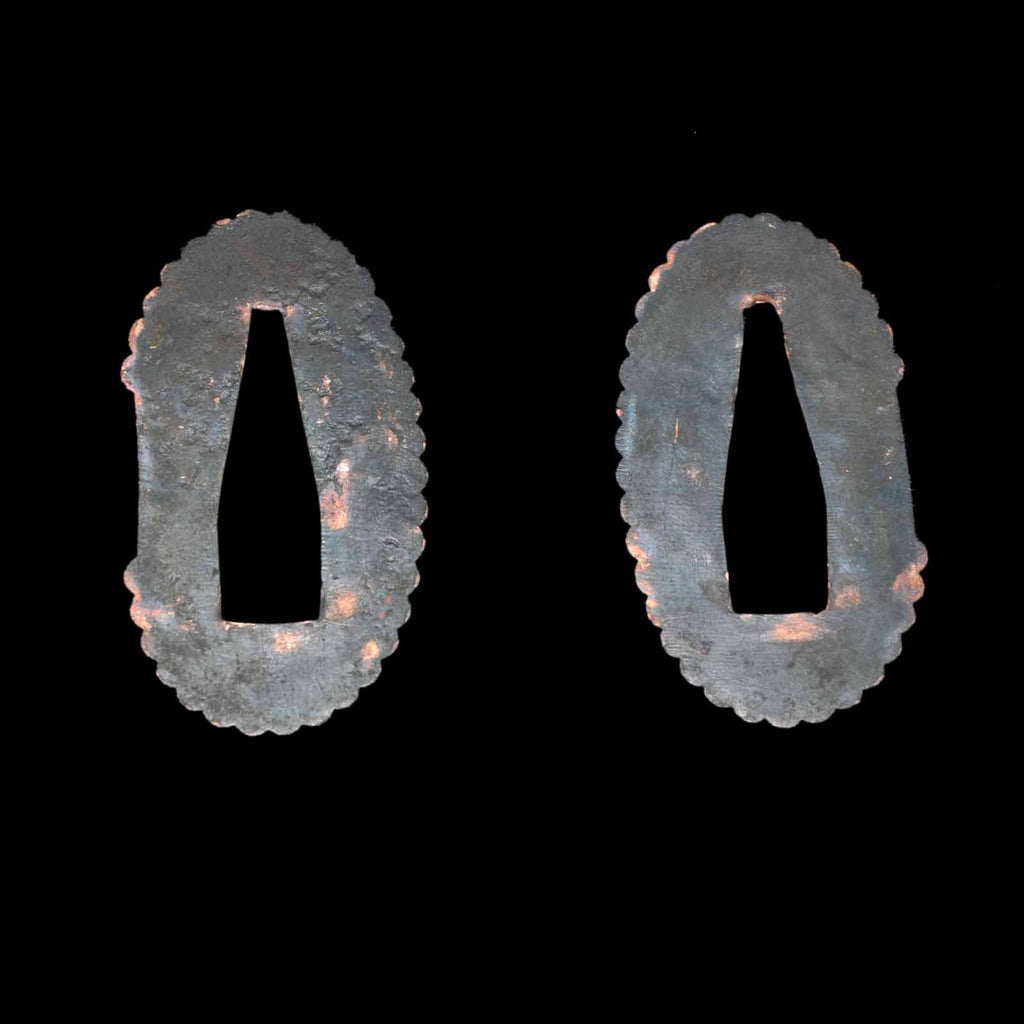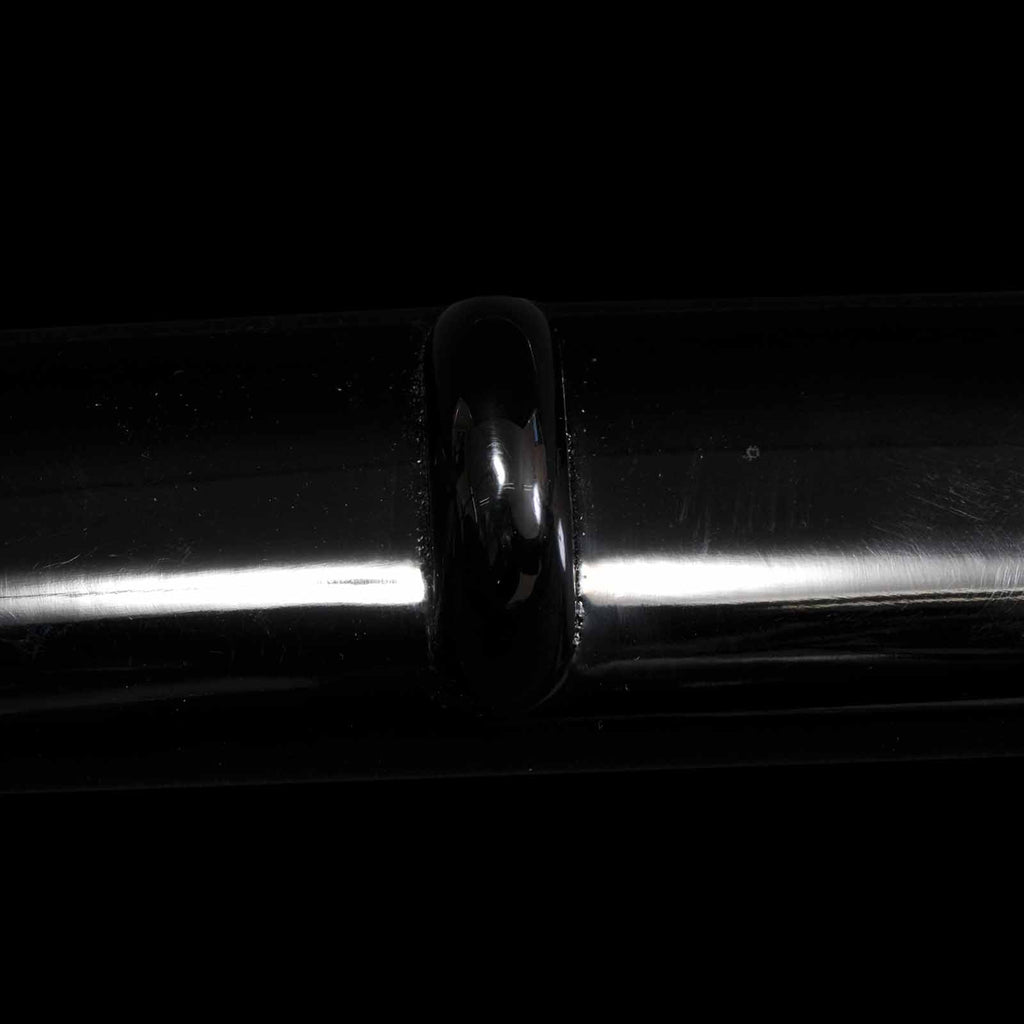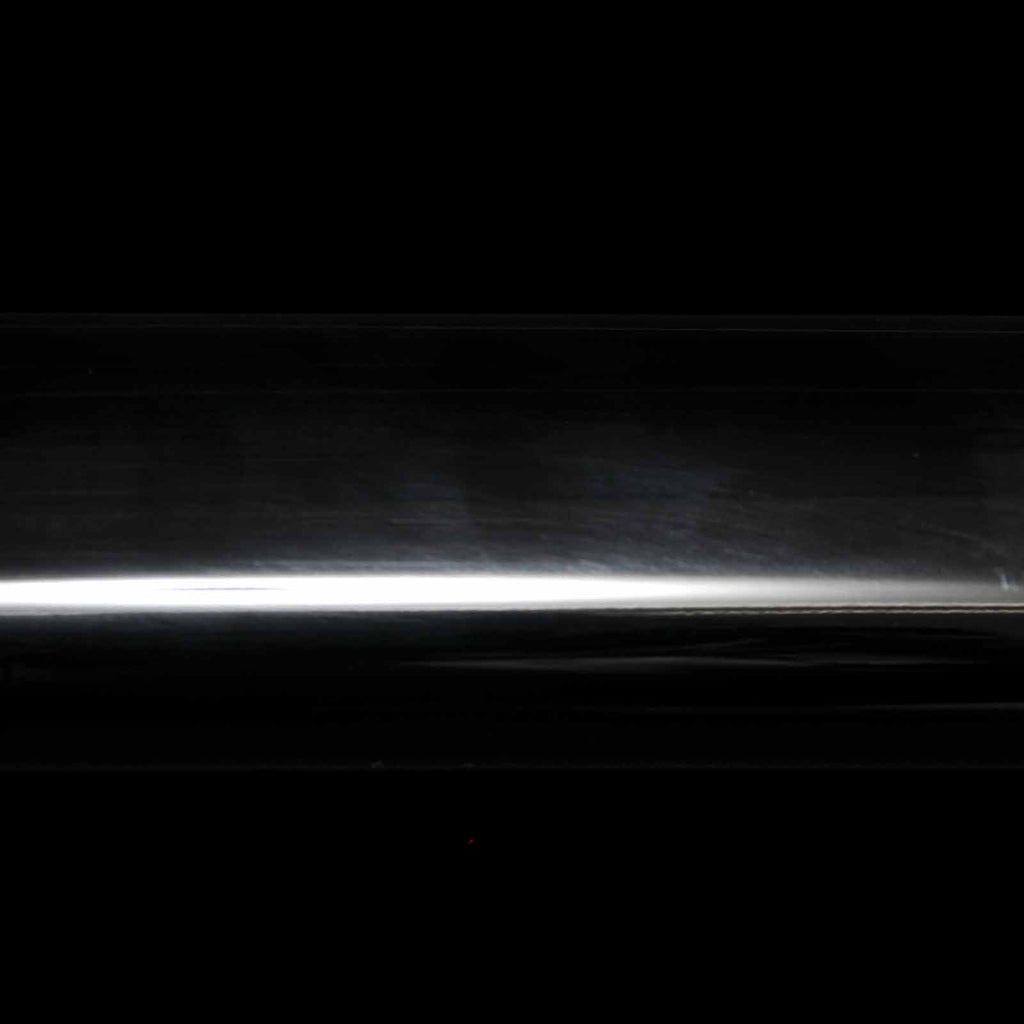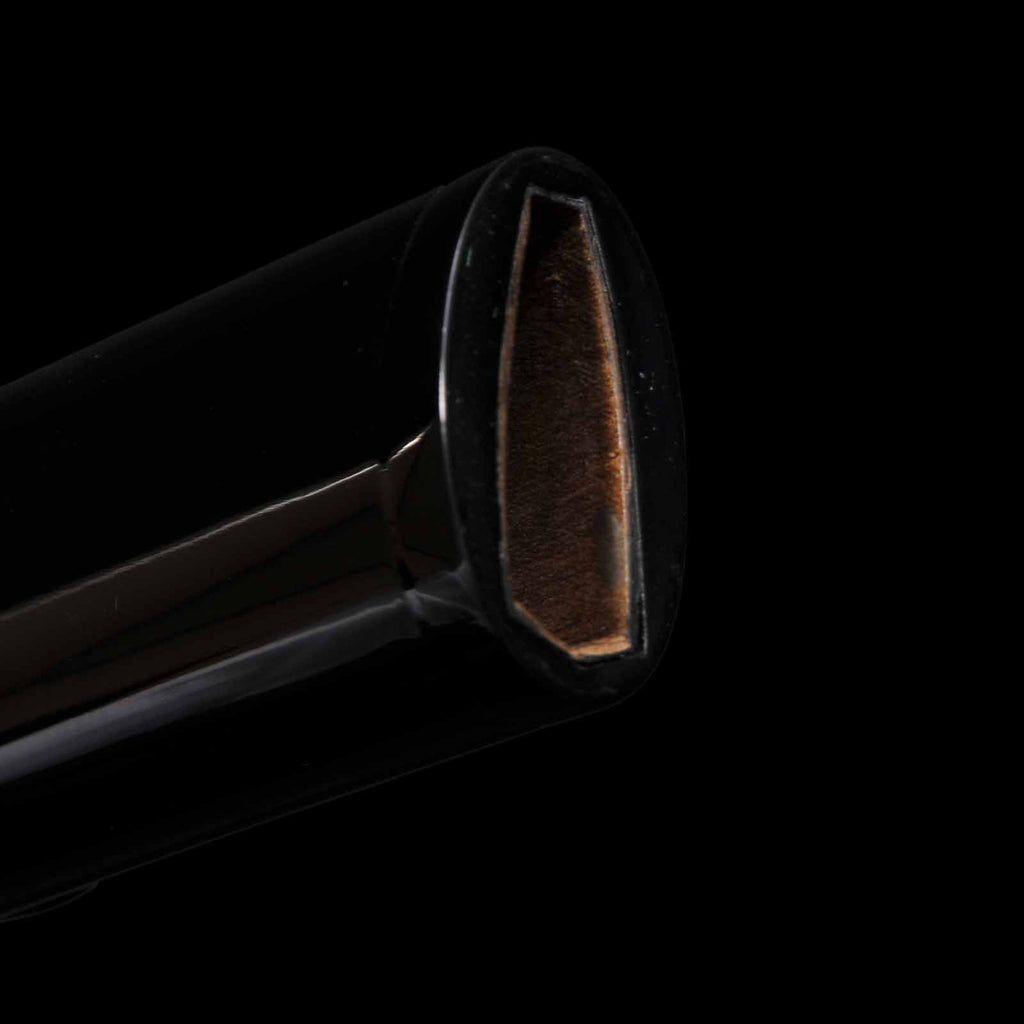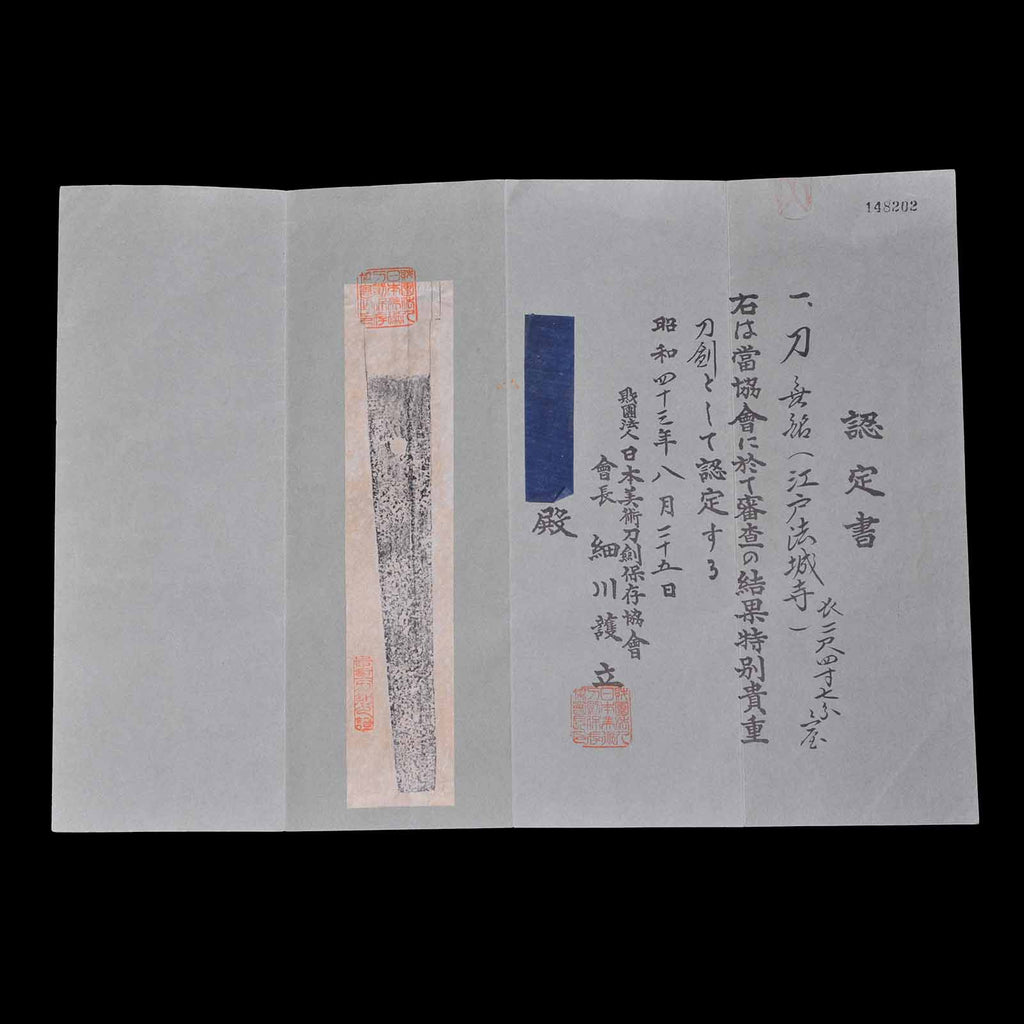Katana - Mumei(No Signature) - NBTHK Tokubetsu Kicho Certificate - Uchigatana Koshirae - Ubu Nakago - Shinto Era - Kagoshima 11813
Although this sword is unsigned, the Society for Preservation of Japanese Art Swords has designated this sword as a work of the Edo Hojoji school, which is considered to be a particularly valuable sword. The Edo Hojoji school was a group of swordsmiths active from the Kanbun to Enpo periods of the Edo era, and produced numerous masters. The Edo Hojoji school is said to have been founded by Hojoji Masahiro, the successor of Hojoji Kunimitsu, who was active during the Koto period.
While the surface of the sword is a little cloudy overall, it is of excellent quality and there are no particularly noticeable flaws or rust. The well-packed koitame hada with a bright suguha hamon mixed with notare. The nie is finely covered and a lot of hataraki can be seen in the ha. This is a typical Kanbun period piece with little curvature. The copper fuchikashira has a dragon motif. The brass menuki has a lion design, which is not spectacular, but matches well with the sword blade.
This price is very reasonable with a special precious appraisal. This sword appeals to a wide range of people, from beginners to collectors of Japanese swords.
- Blade length: 75.0 cm
- Curvature: 0.4 cm
- Number of Mekugi hole: 1
- Sakihaba: 18.9 mm
- Sakikasane: 4.5 mm
- Motohaba: 30.0 mm
- Motokasane: 6.2 mm
- Signature: No signature
- Era: Shinto
- Structure: Shinogi-zukuri, Iori-mune
- Jigane: Ko-itame
- Hamon: Suguha with Notare
- Boshi: Massugu Haitte Nakamaru ni Kaeru
- Weight(blade only): 720 g
- Nakago: Ubu
- Original Registration No.: Kagoshima 11813
